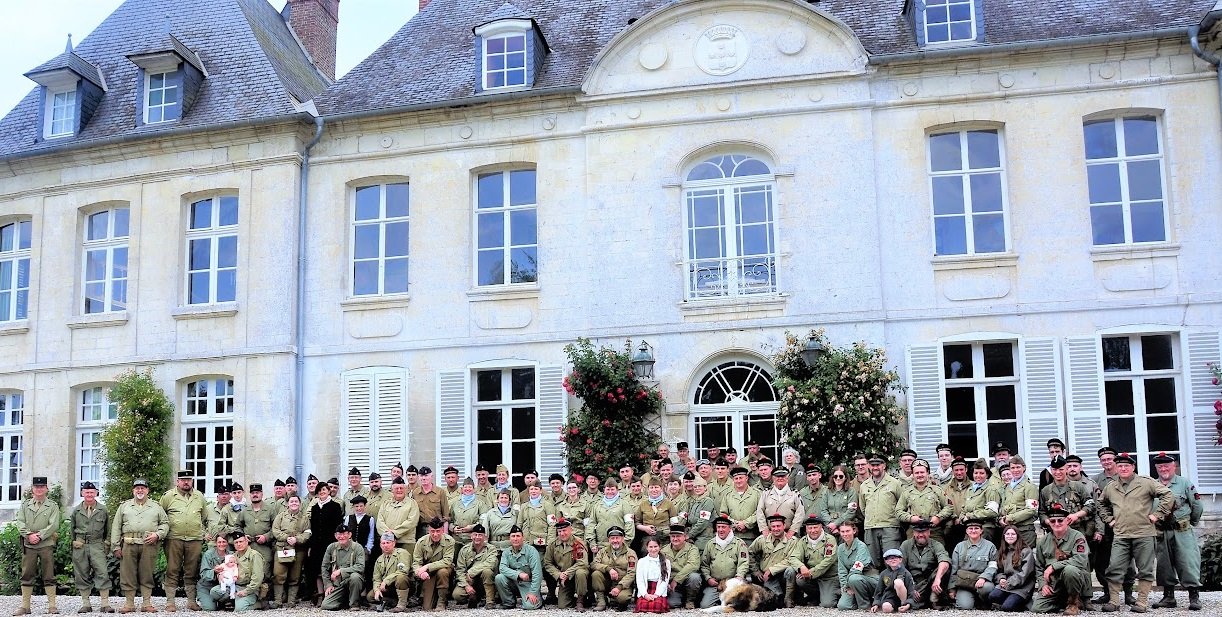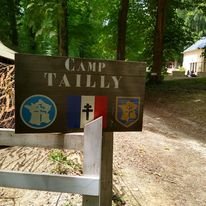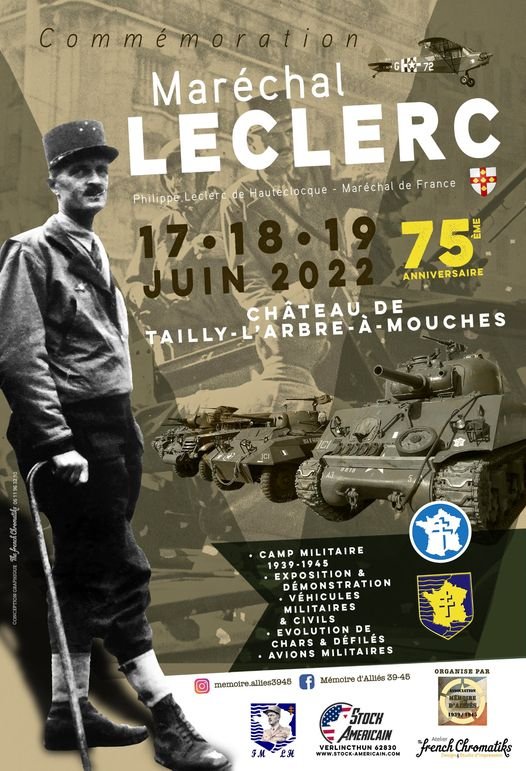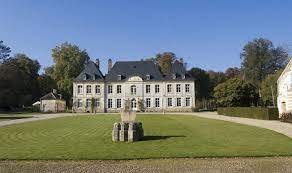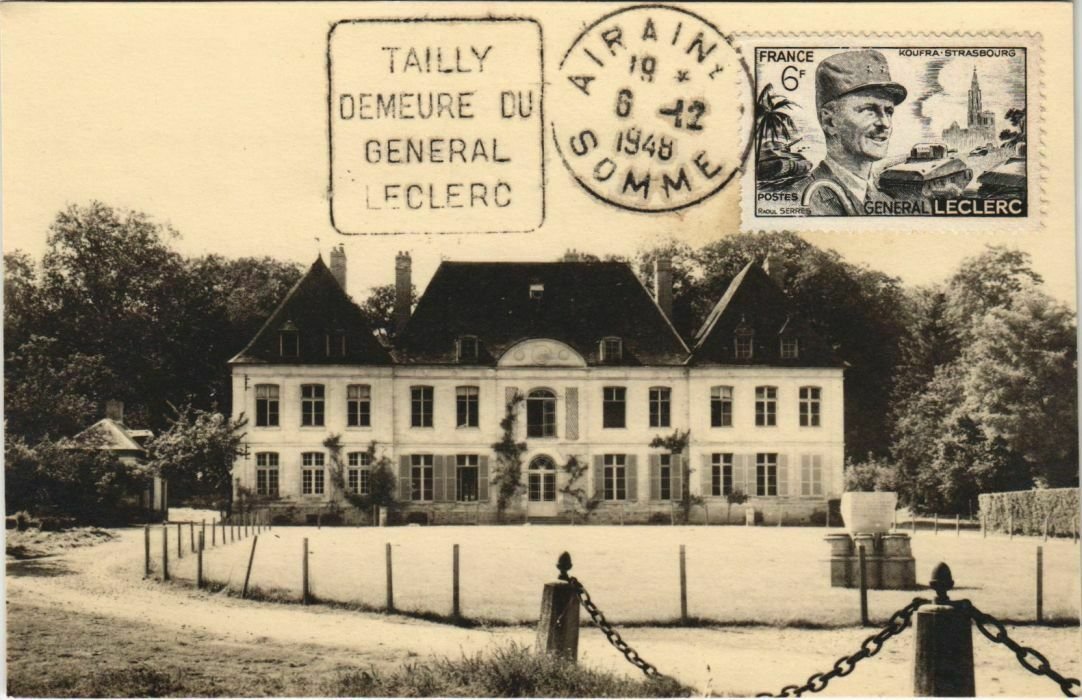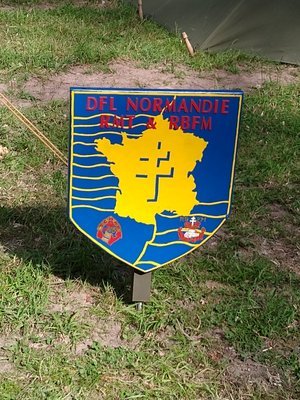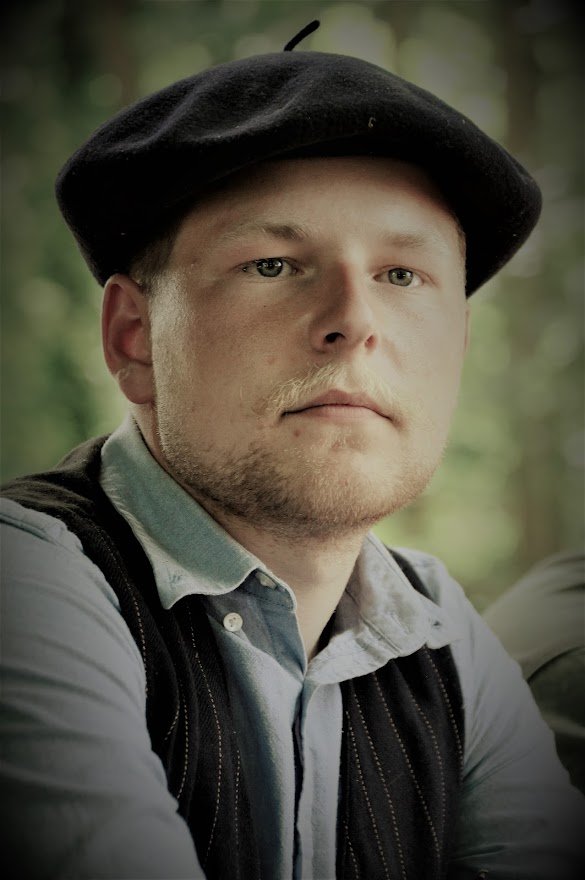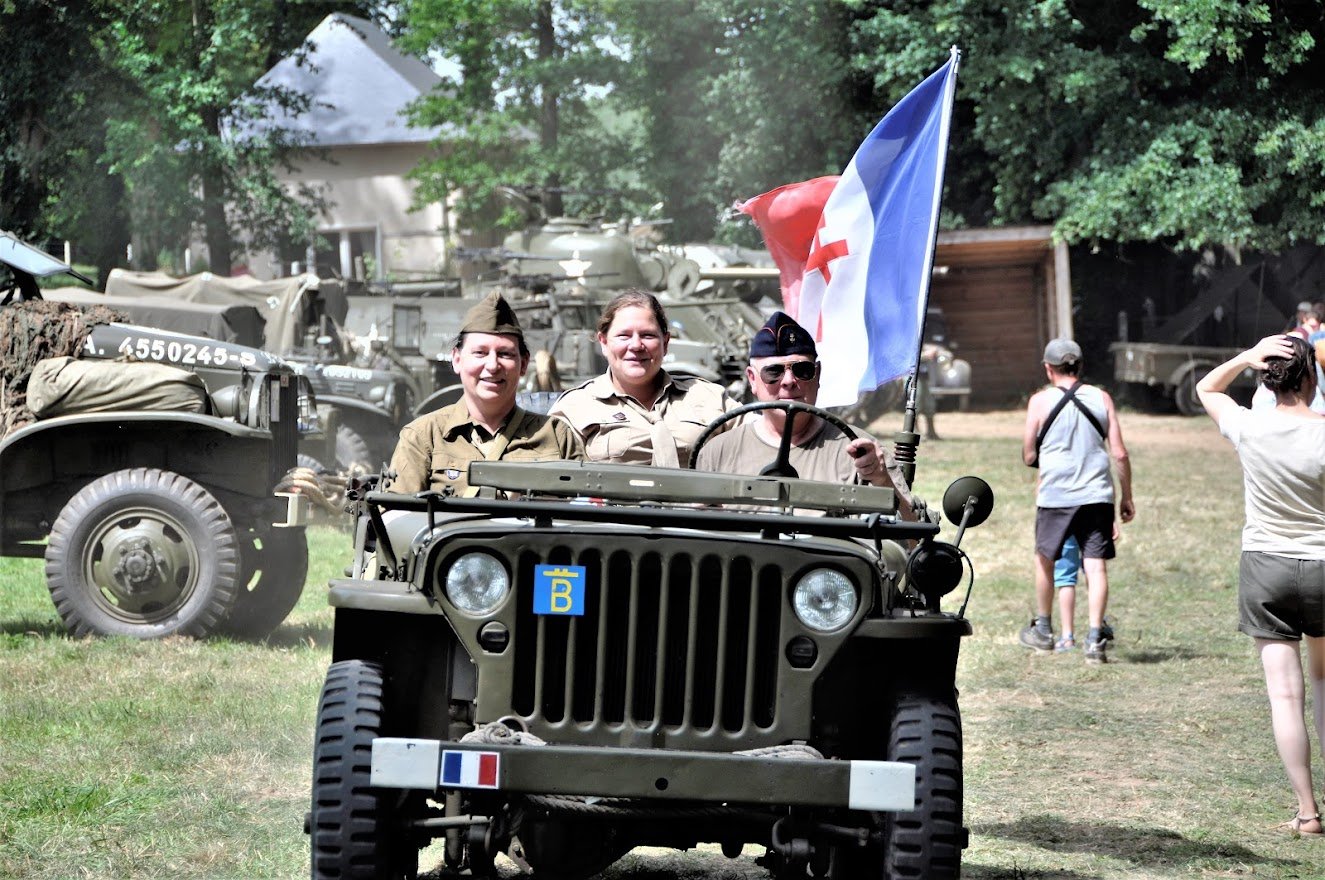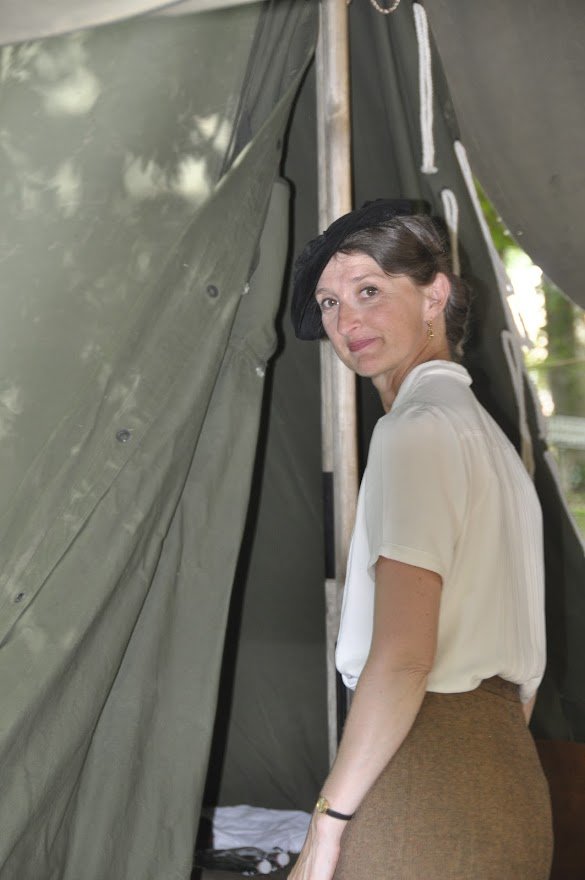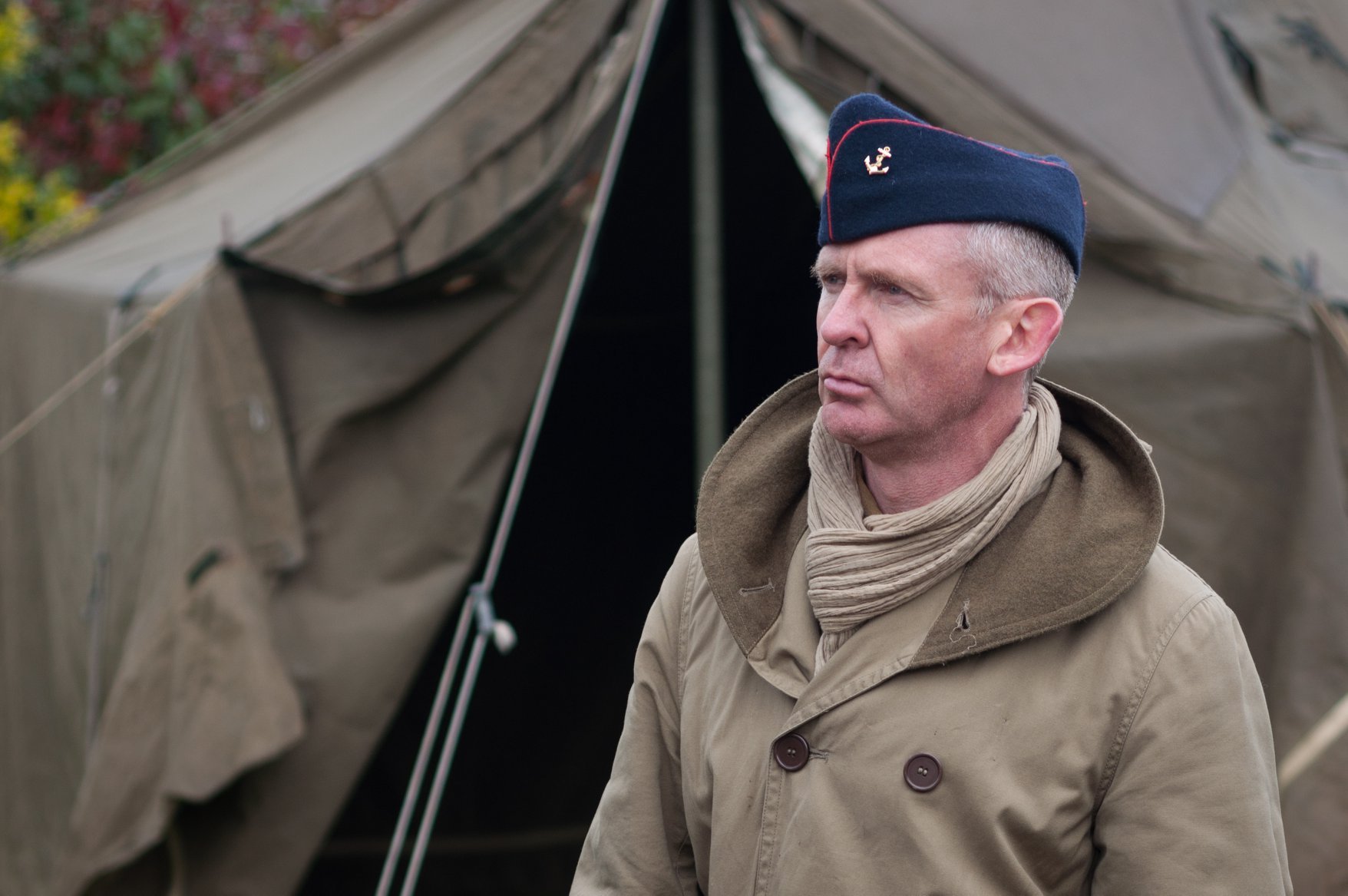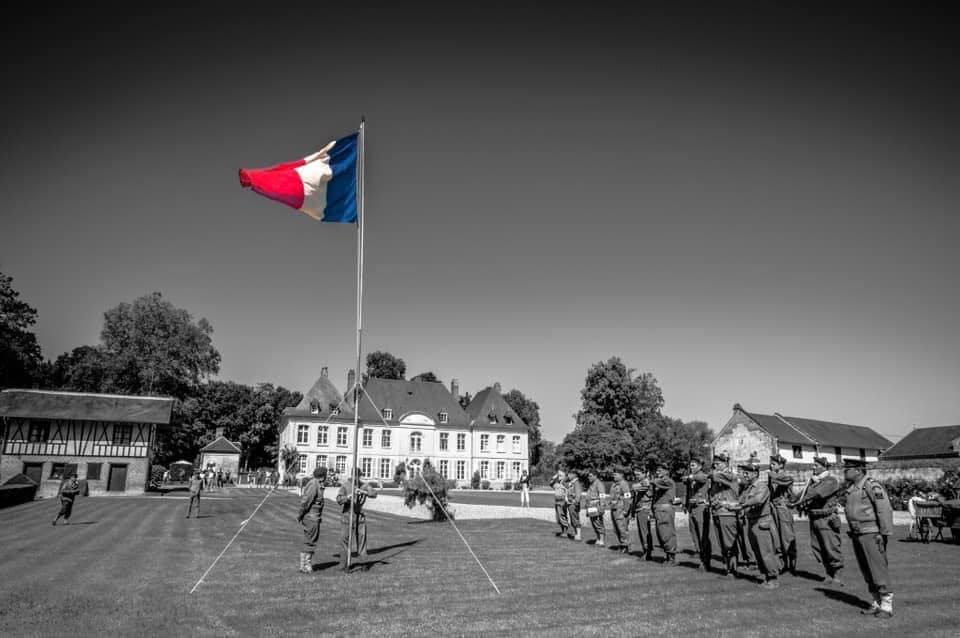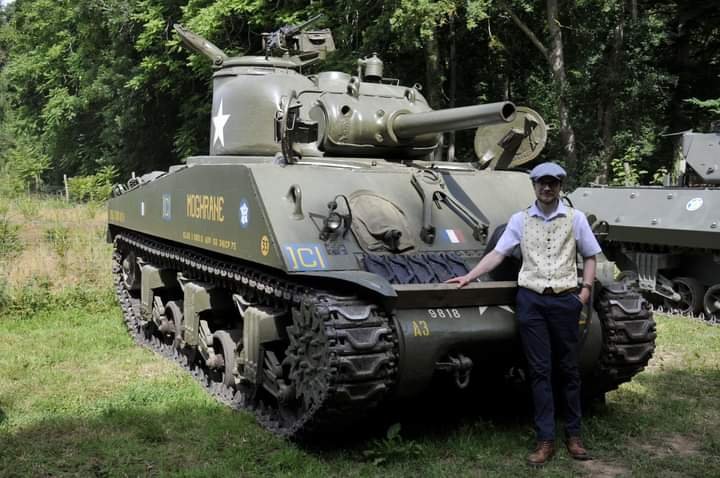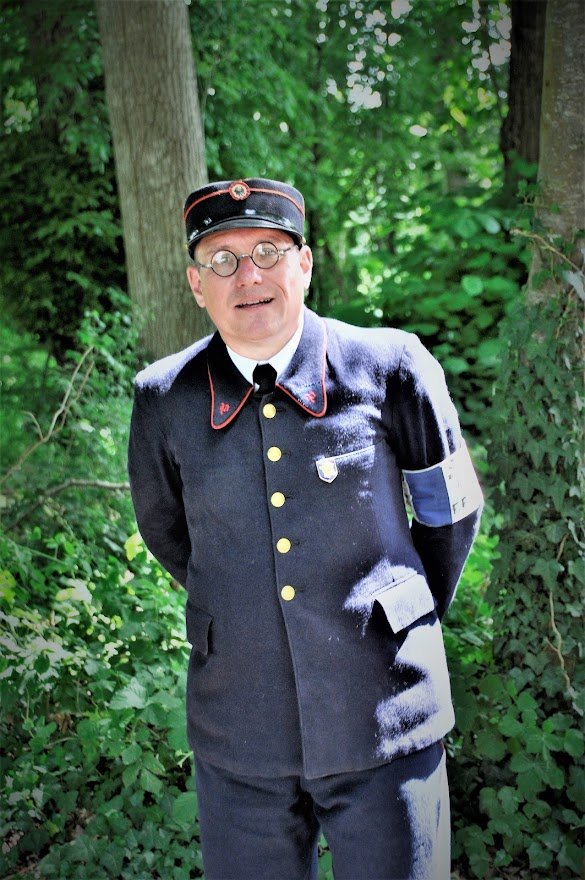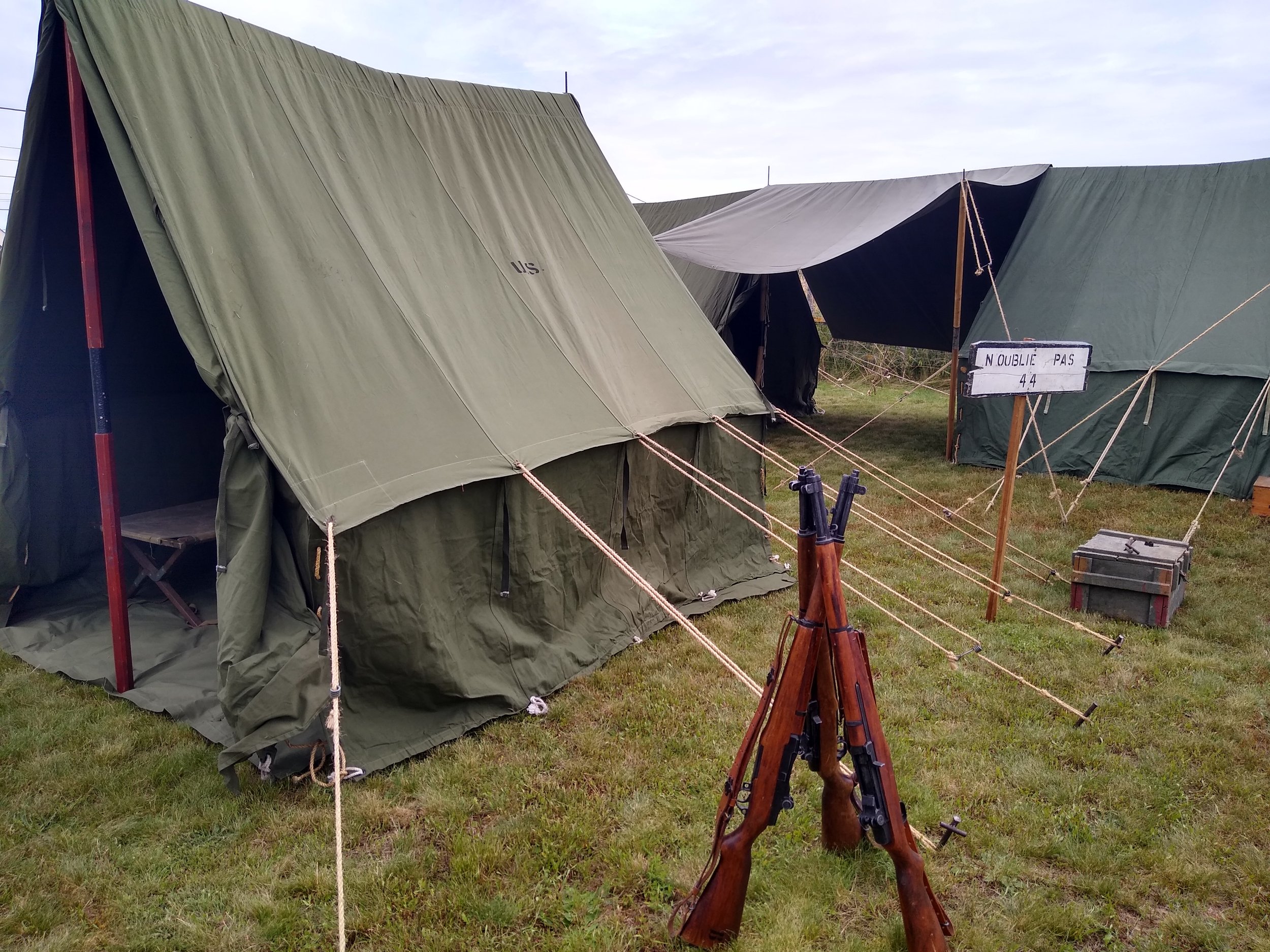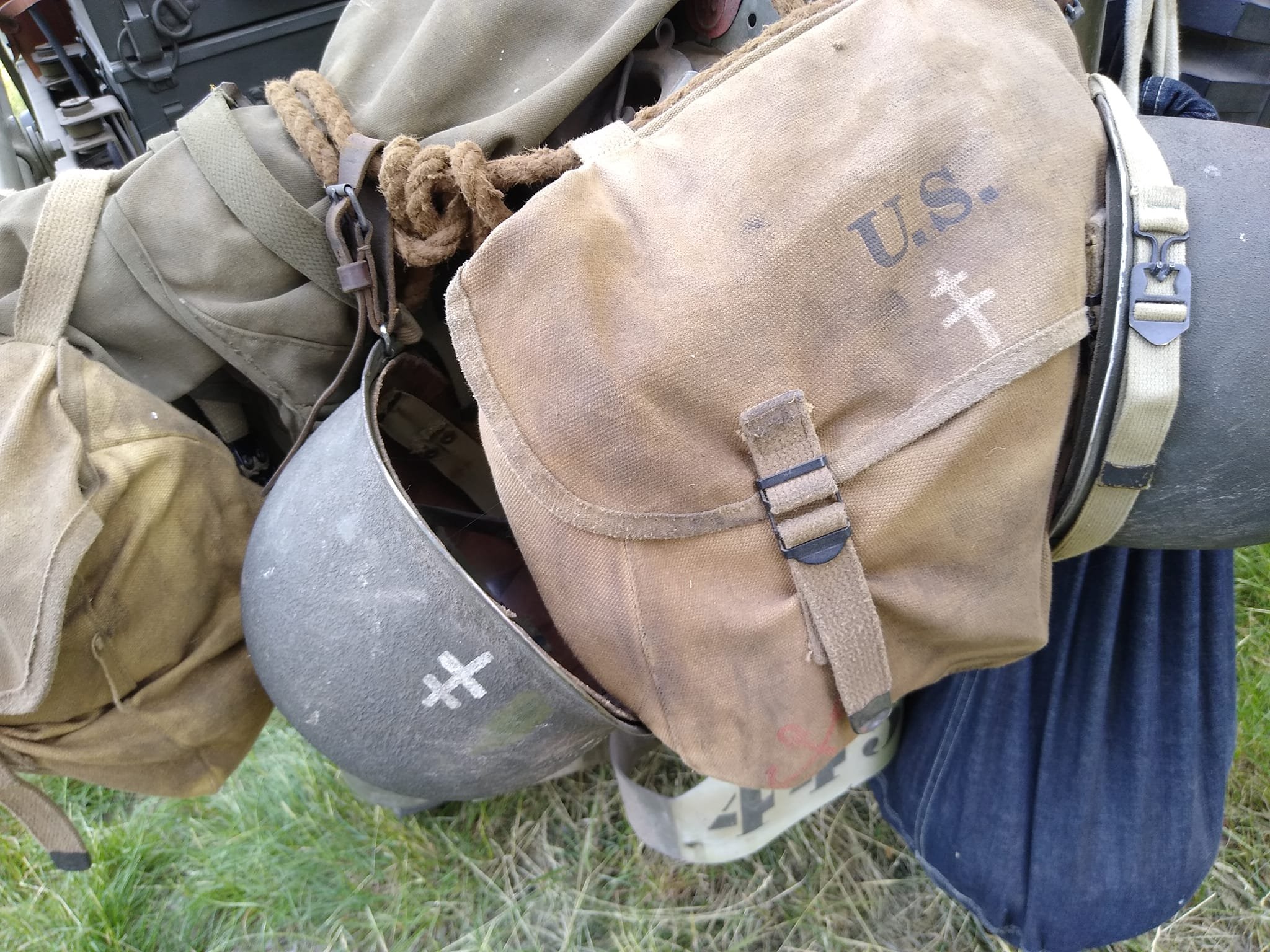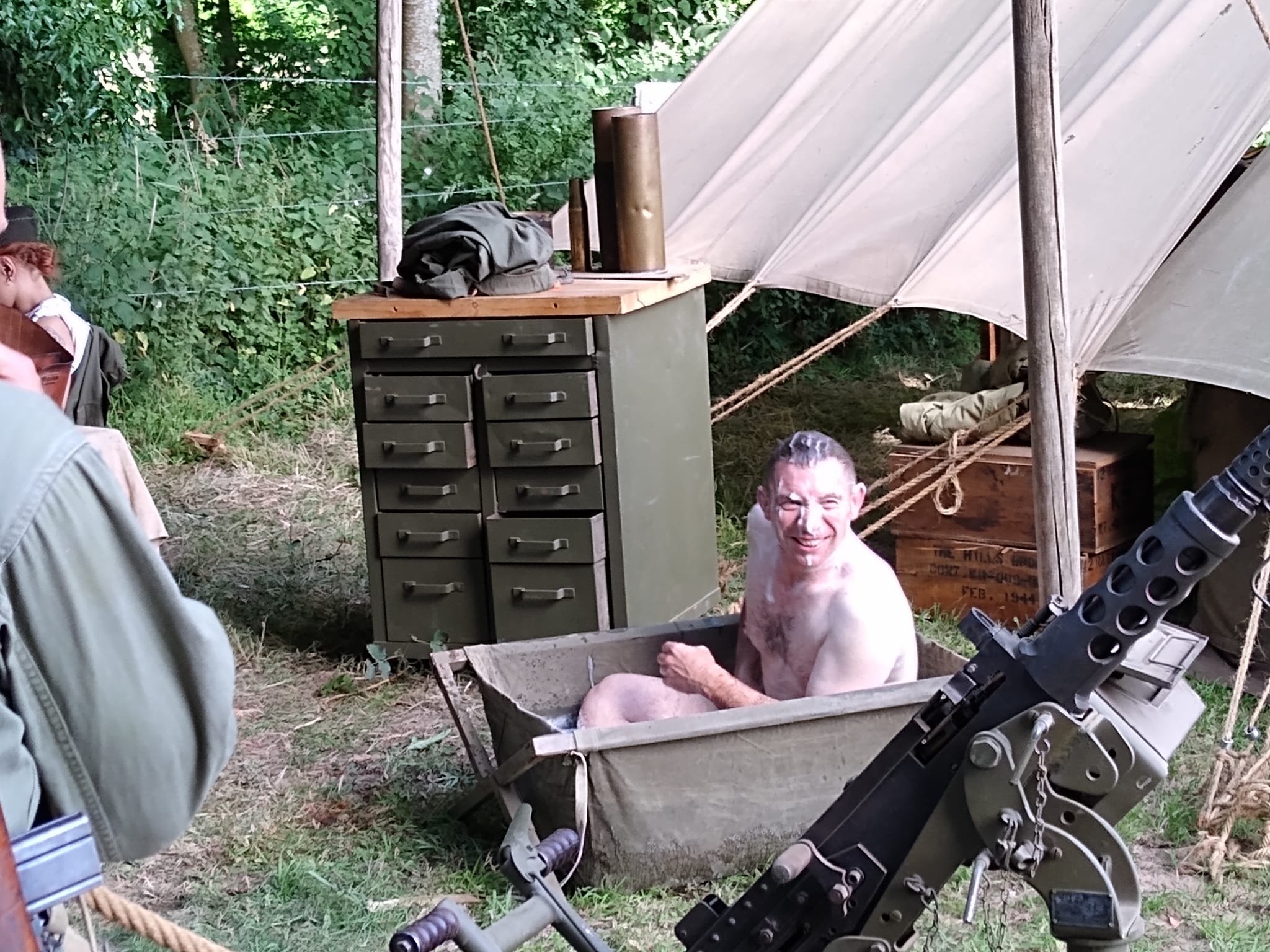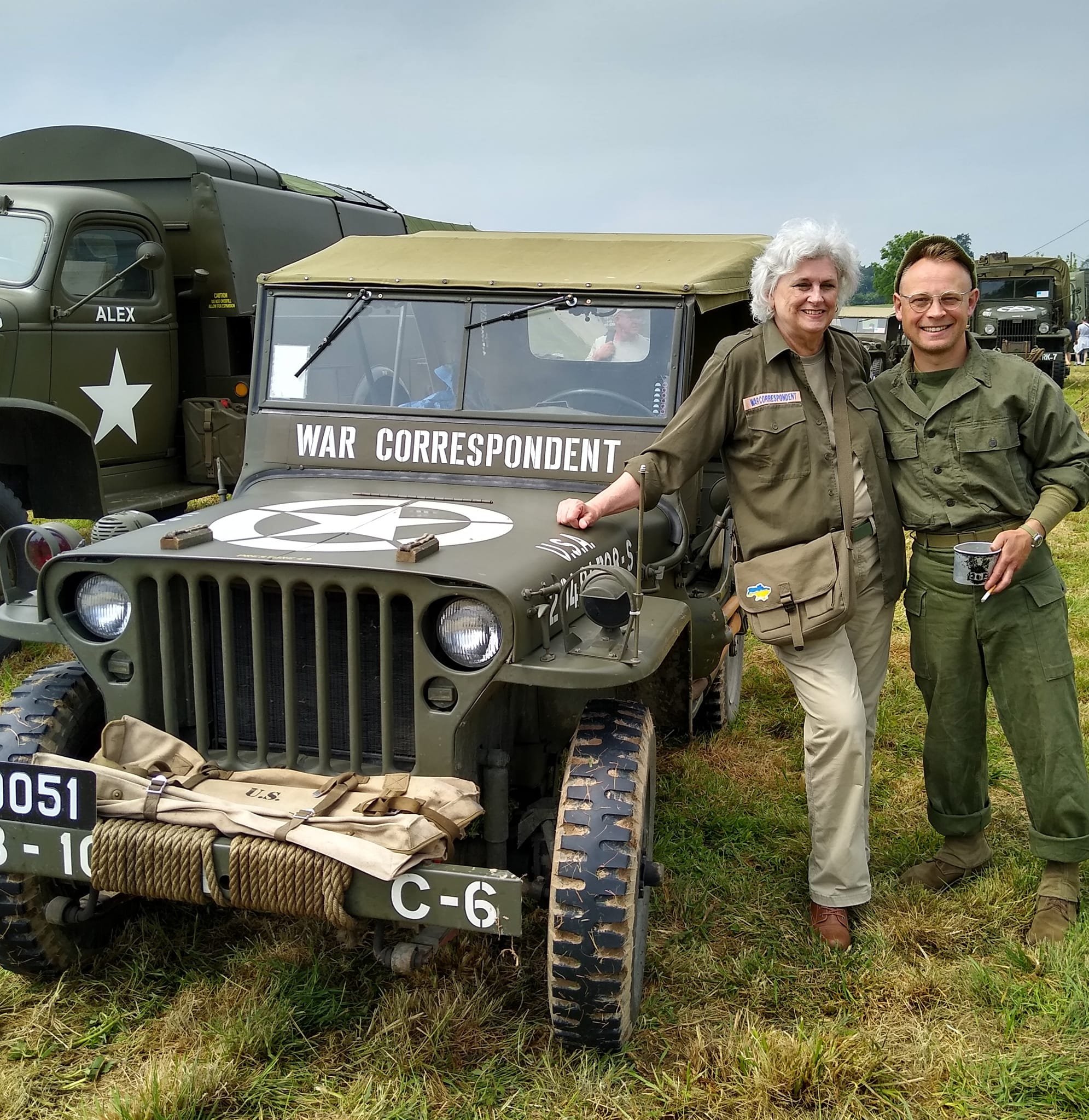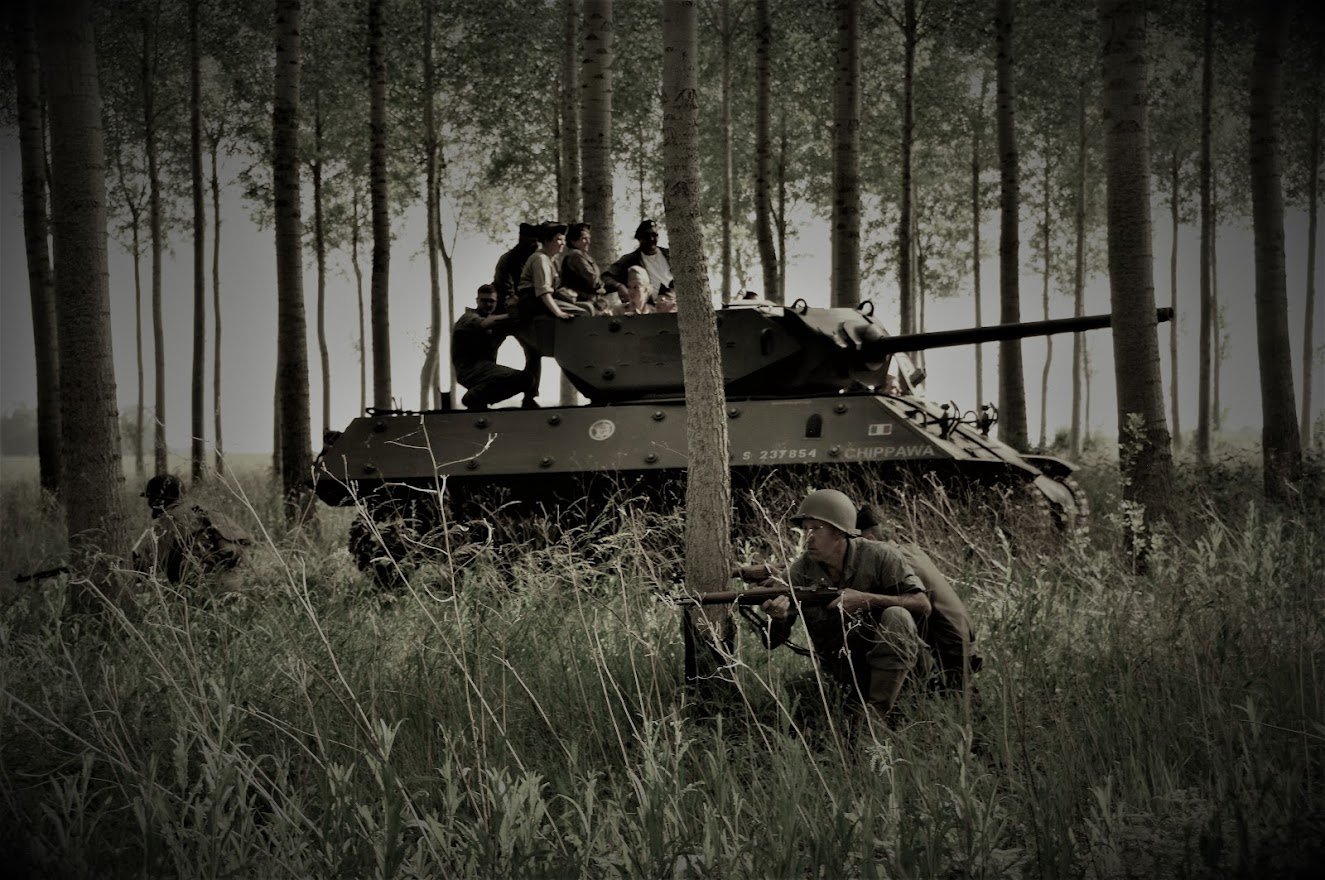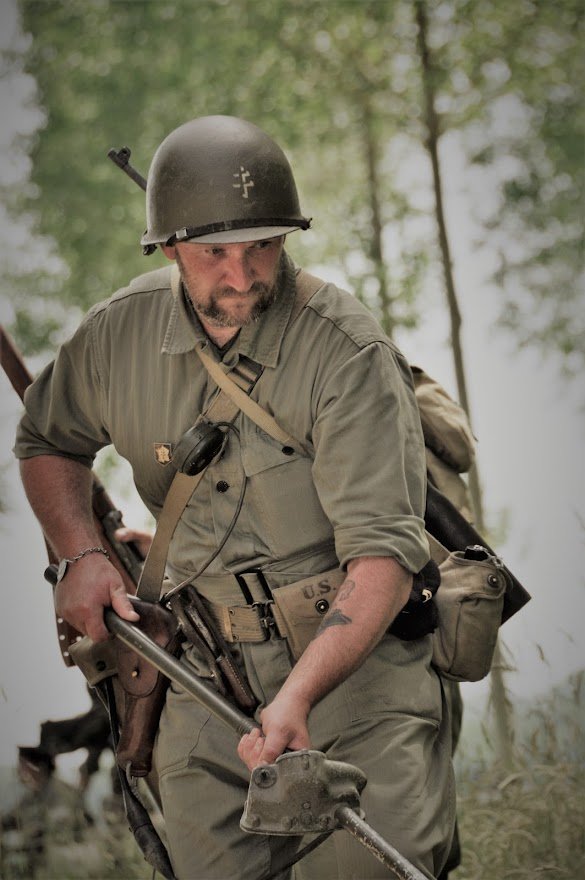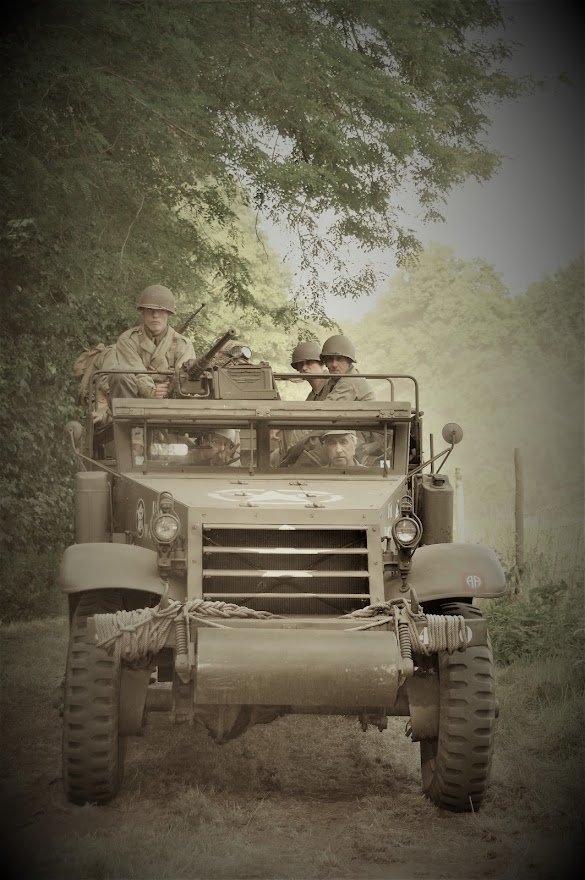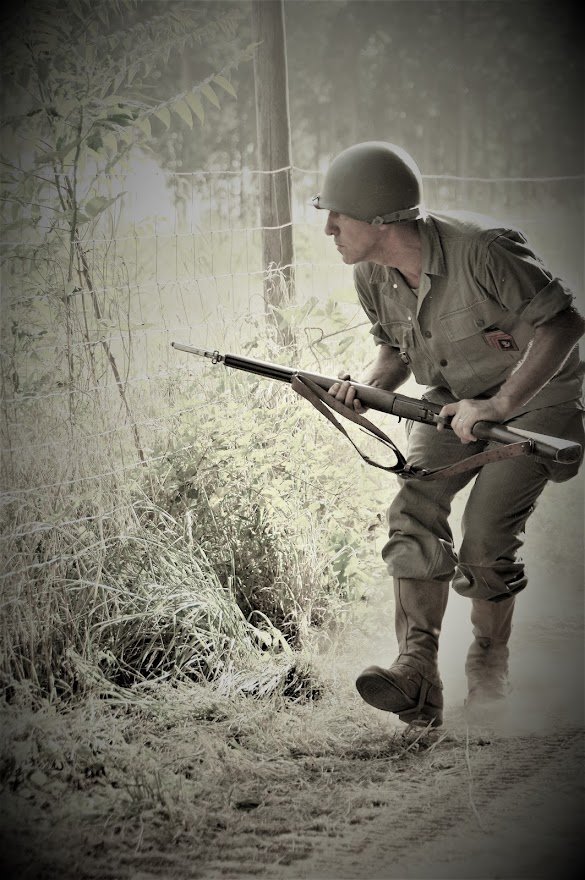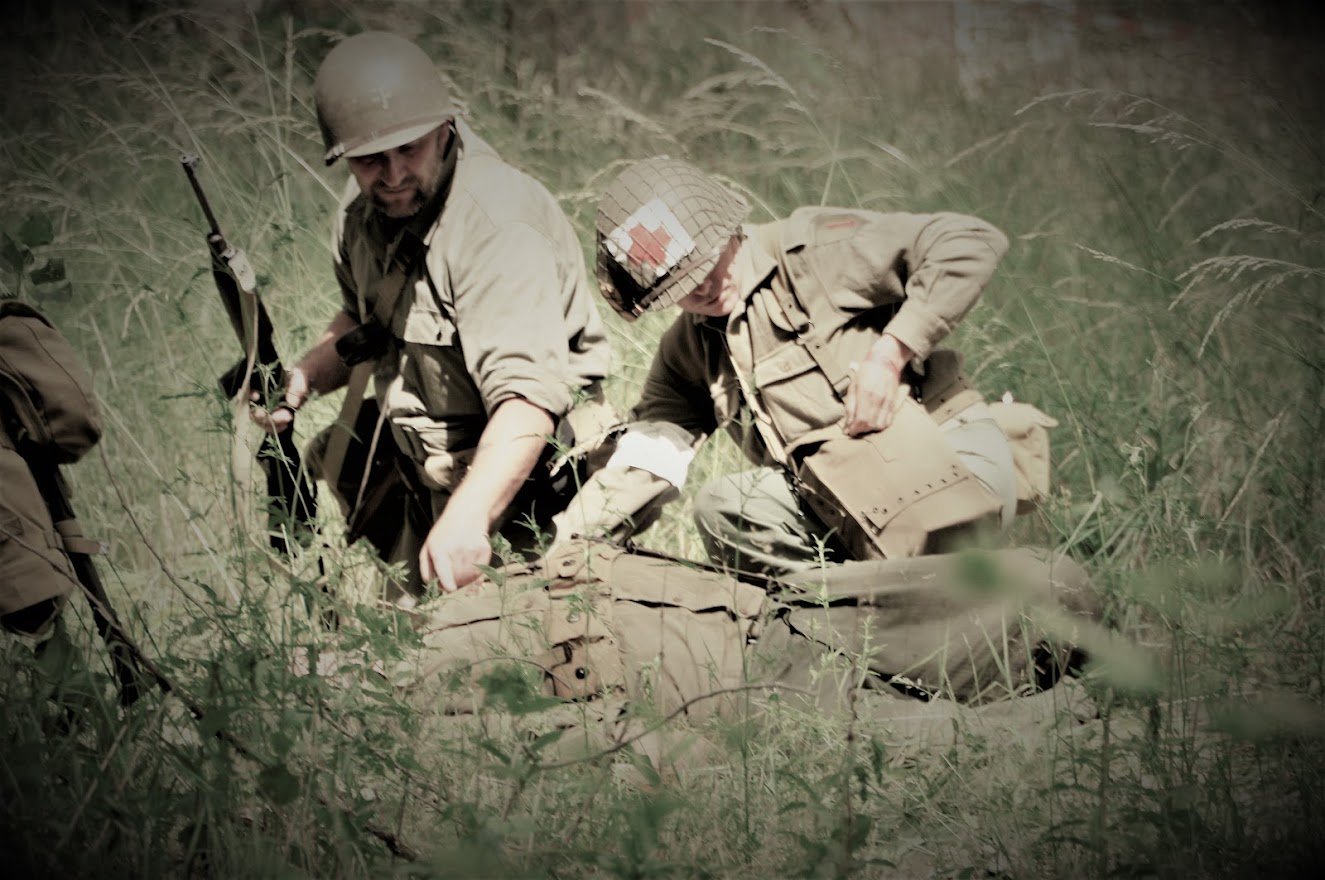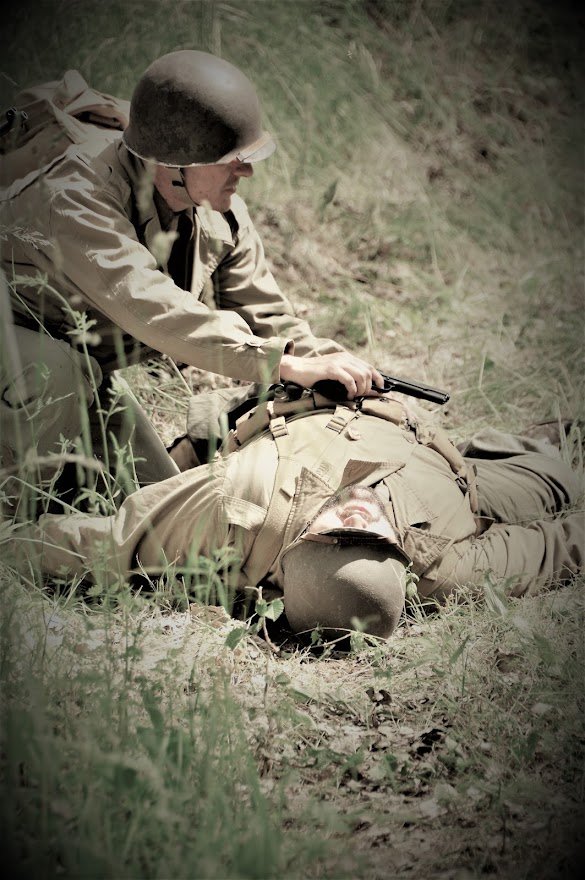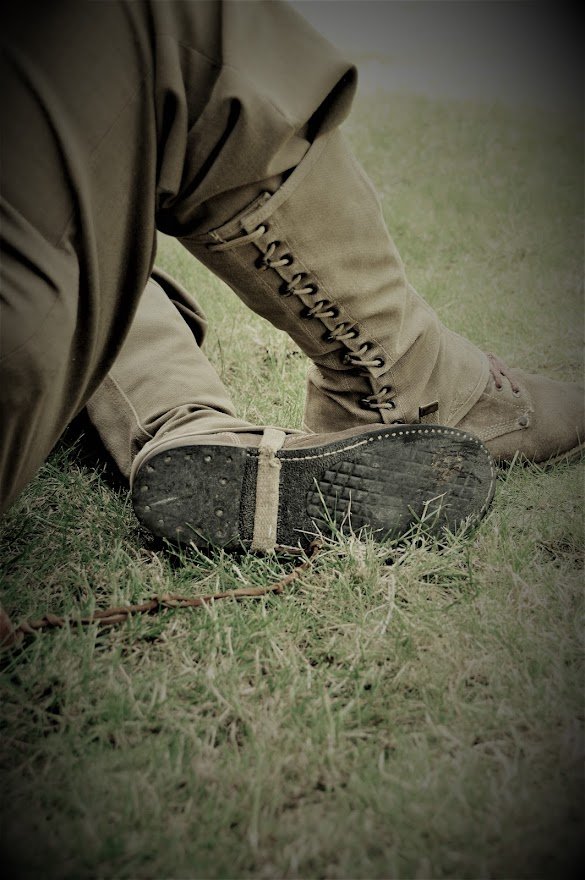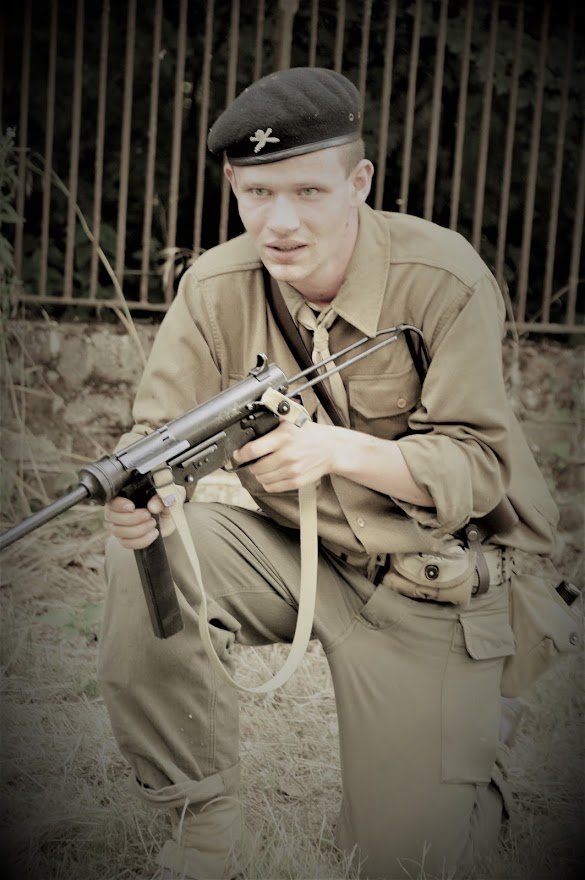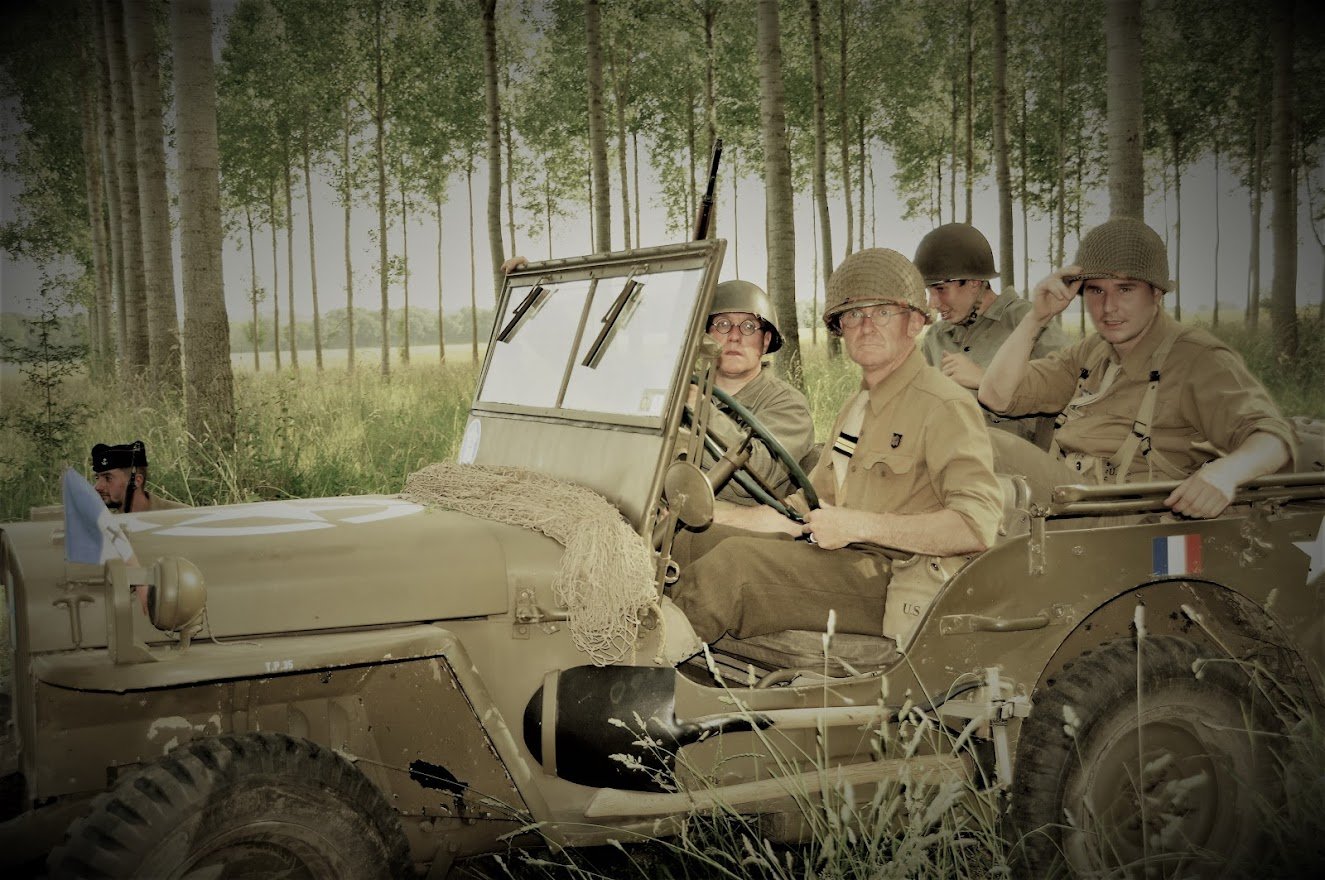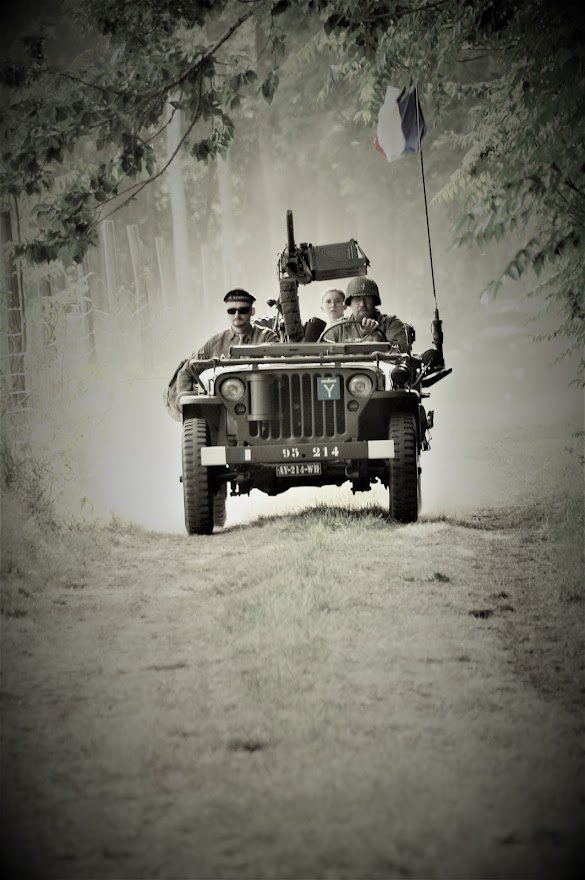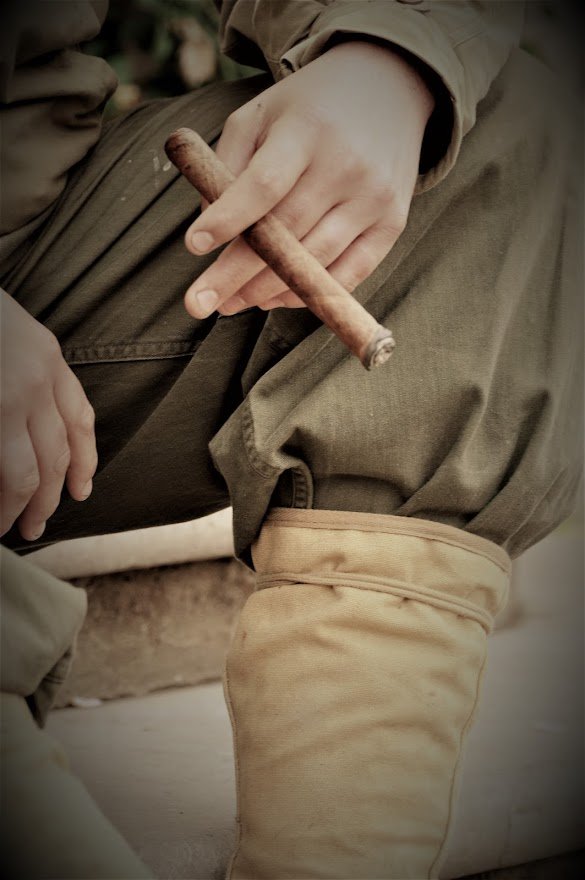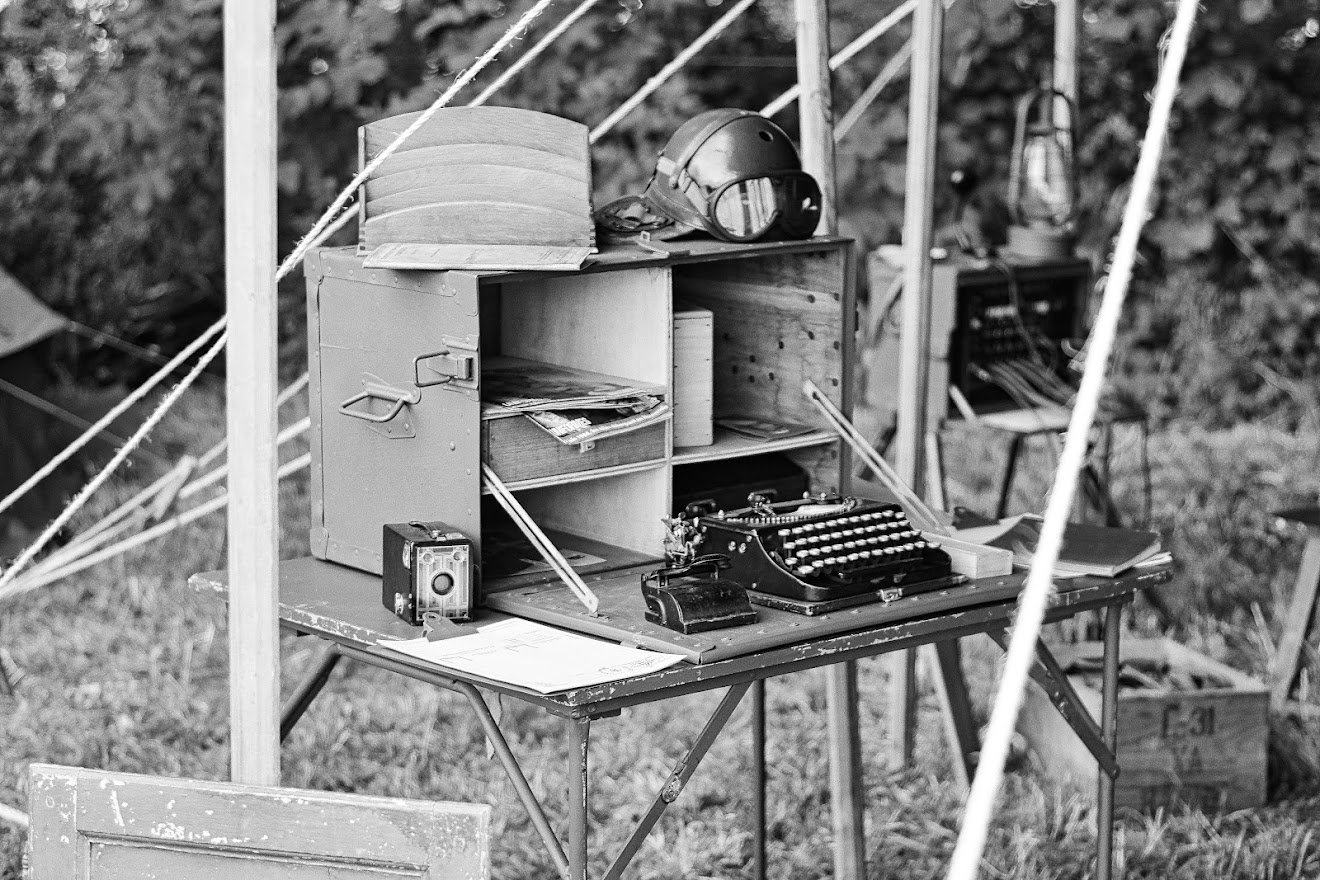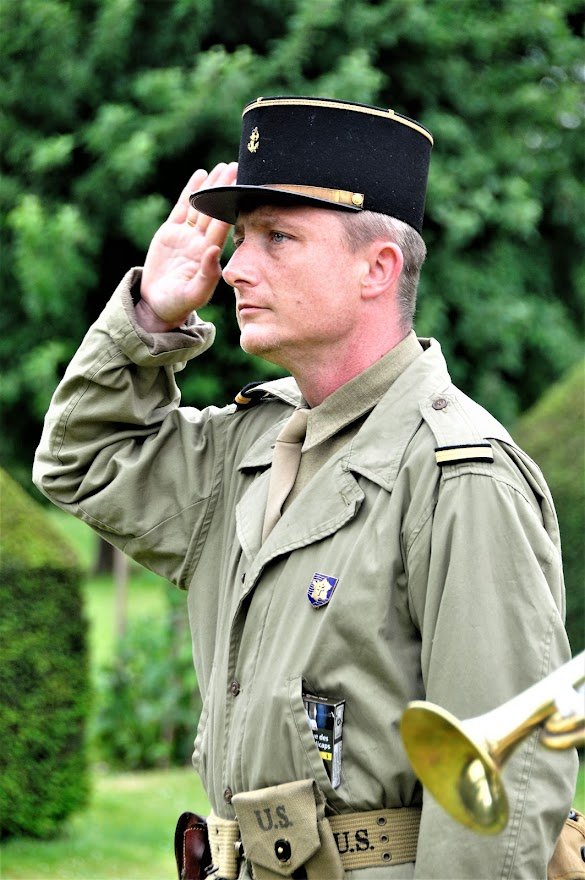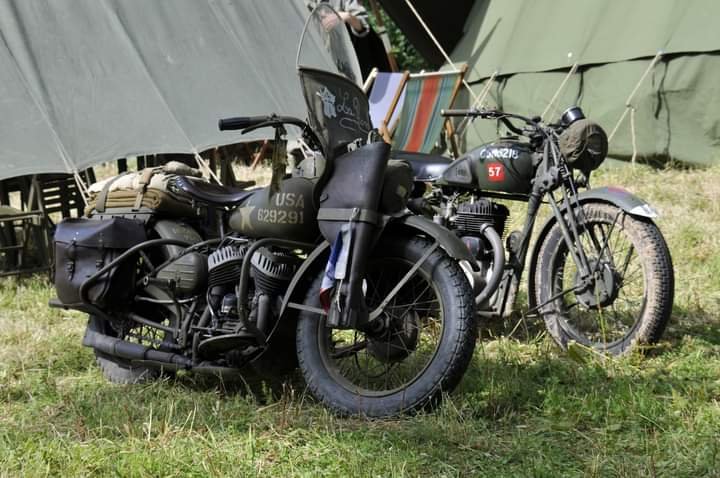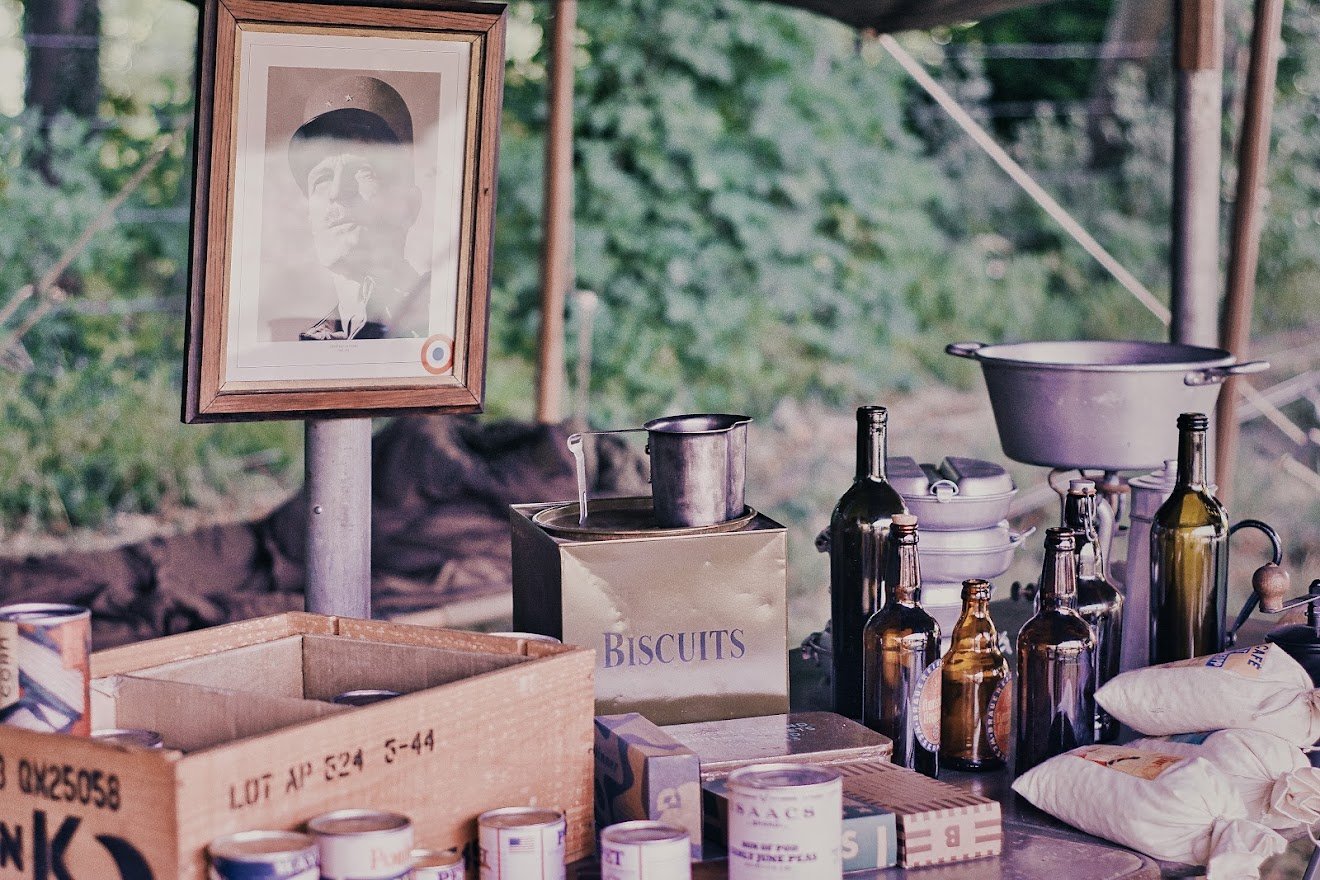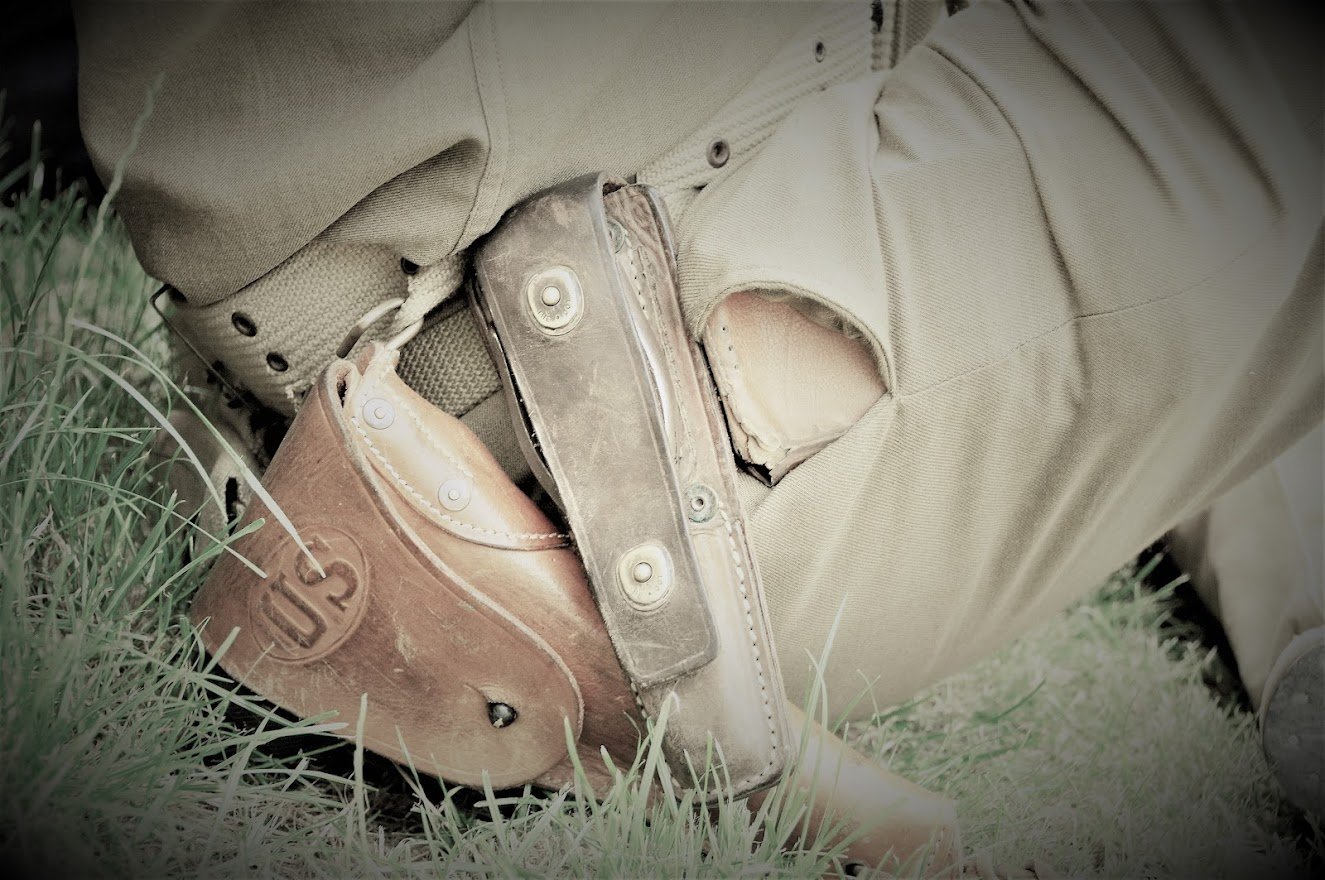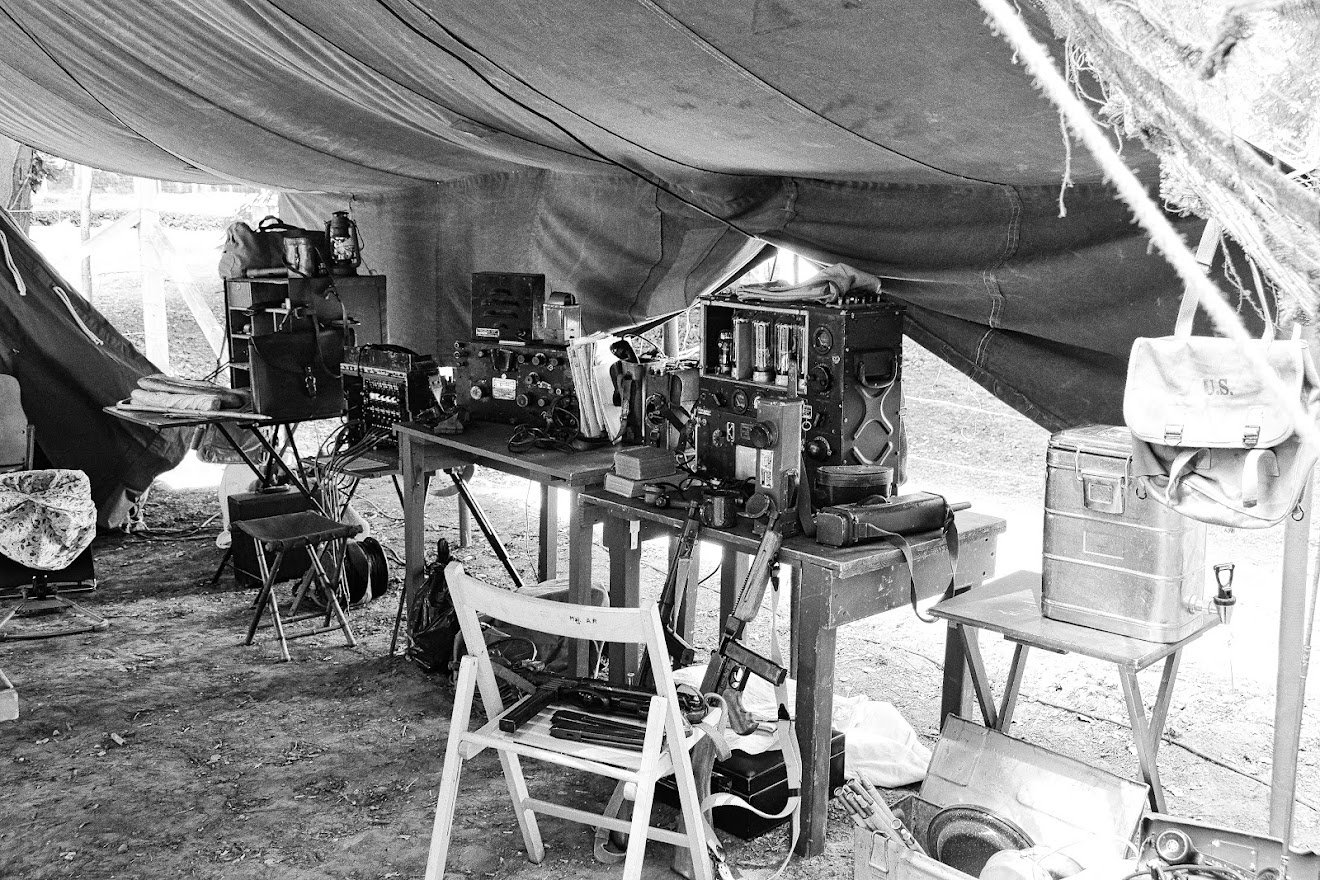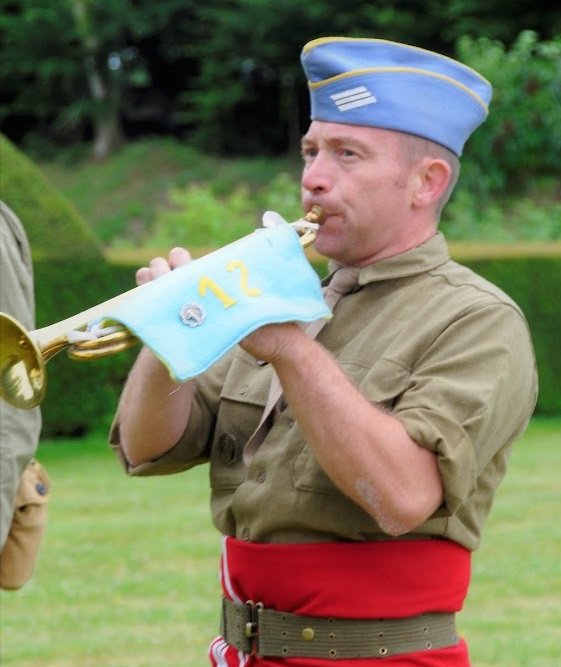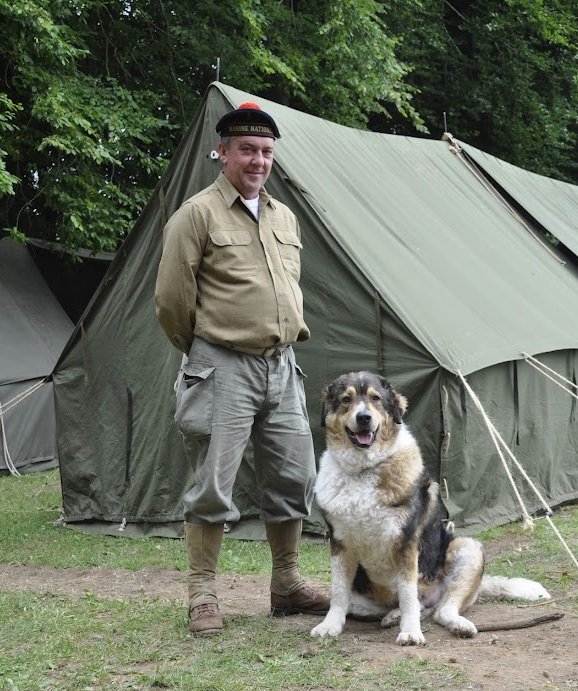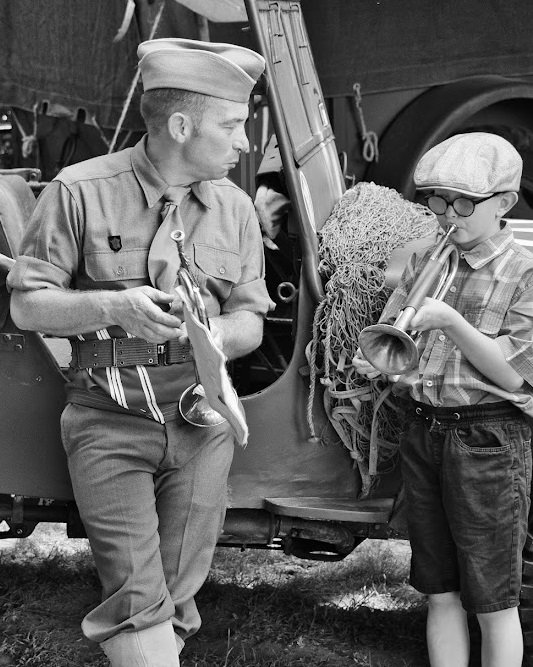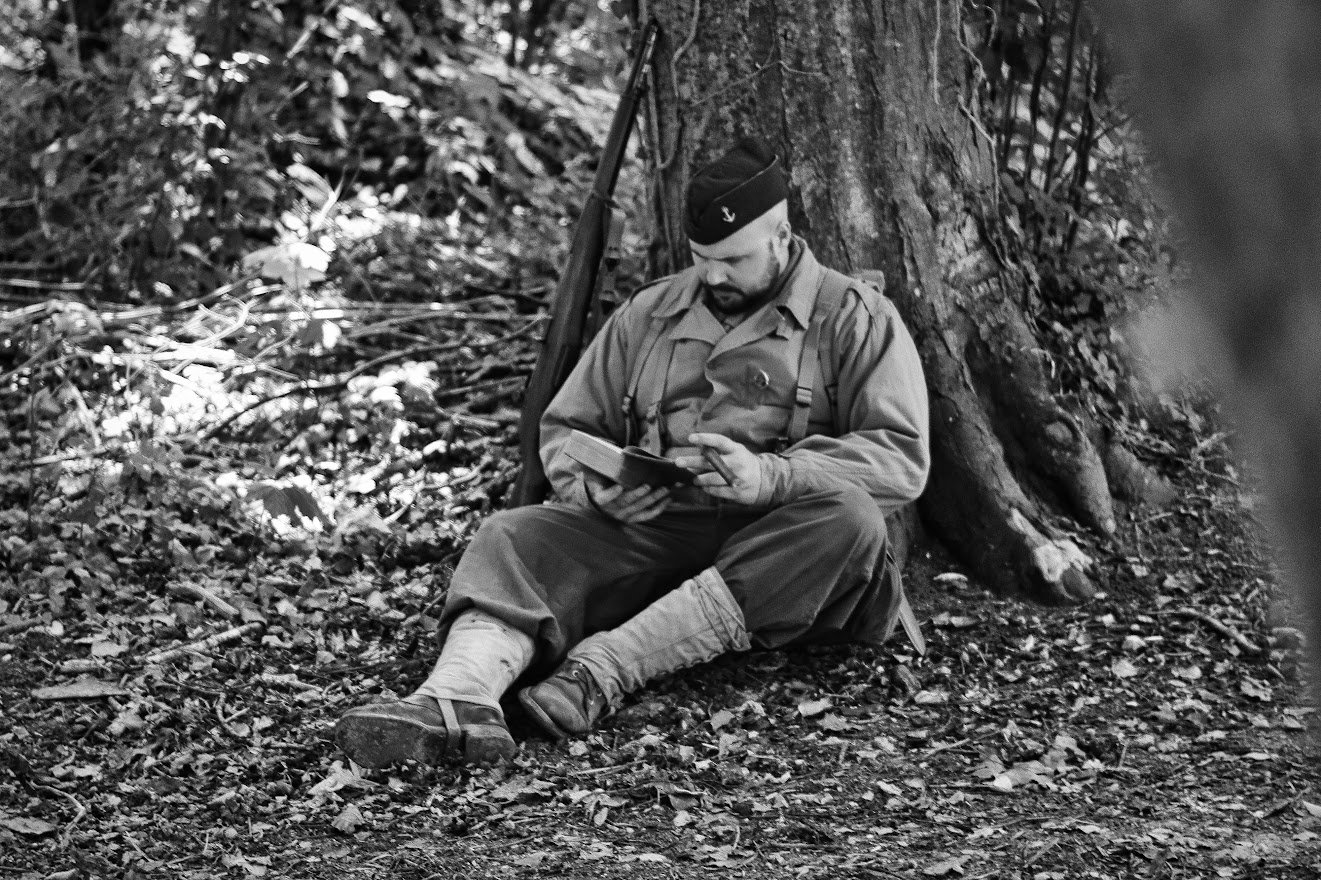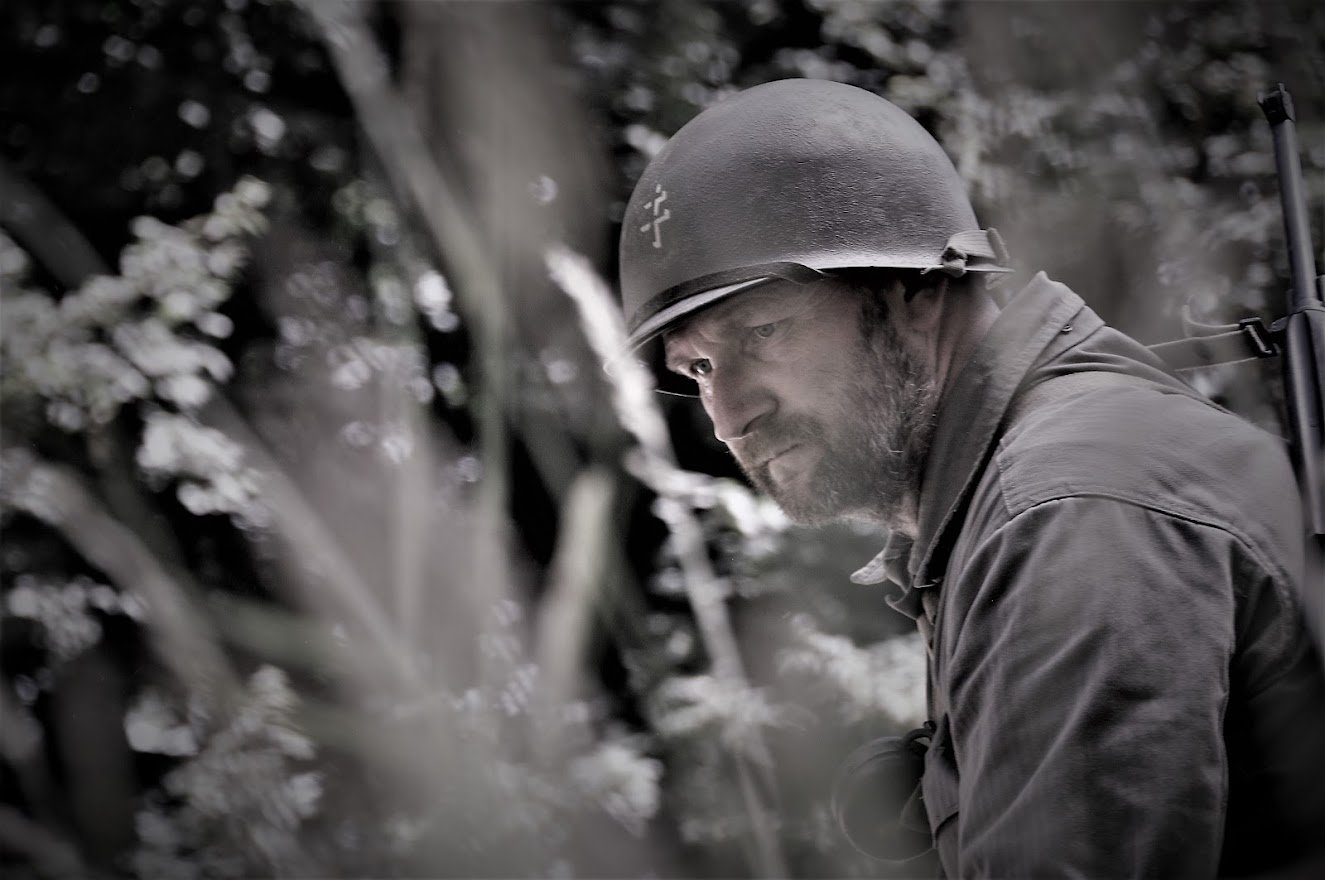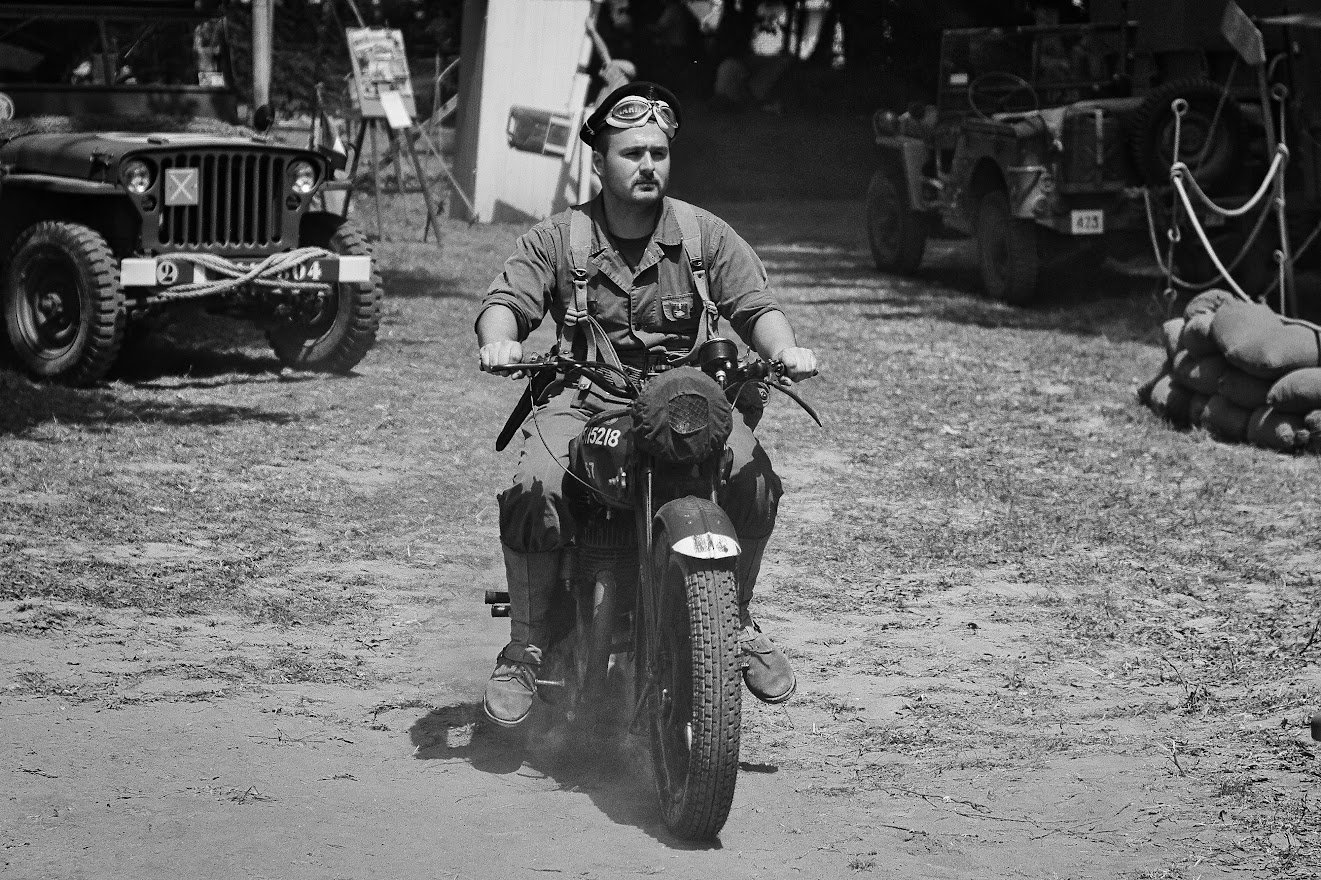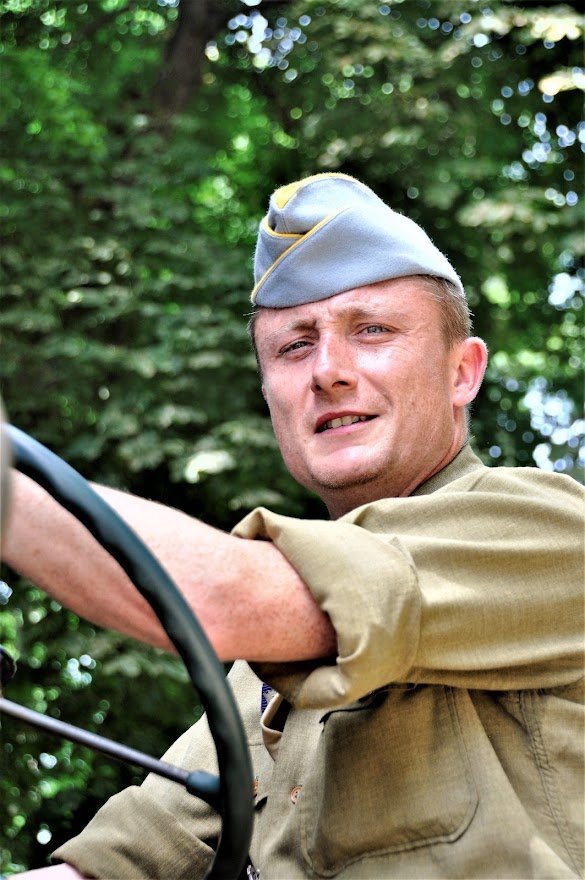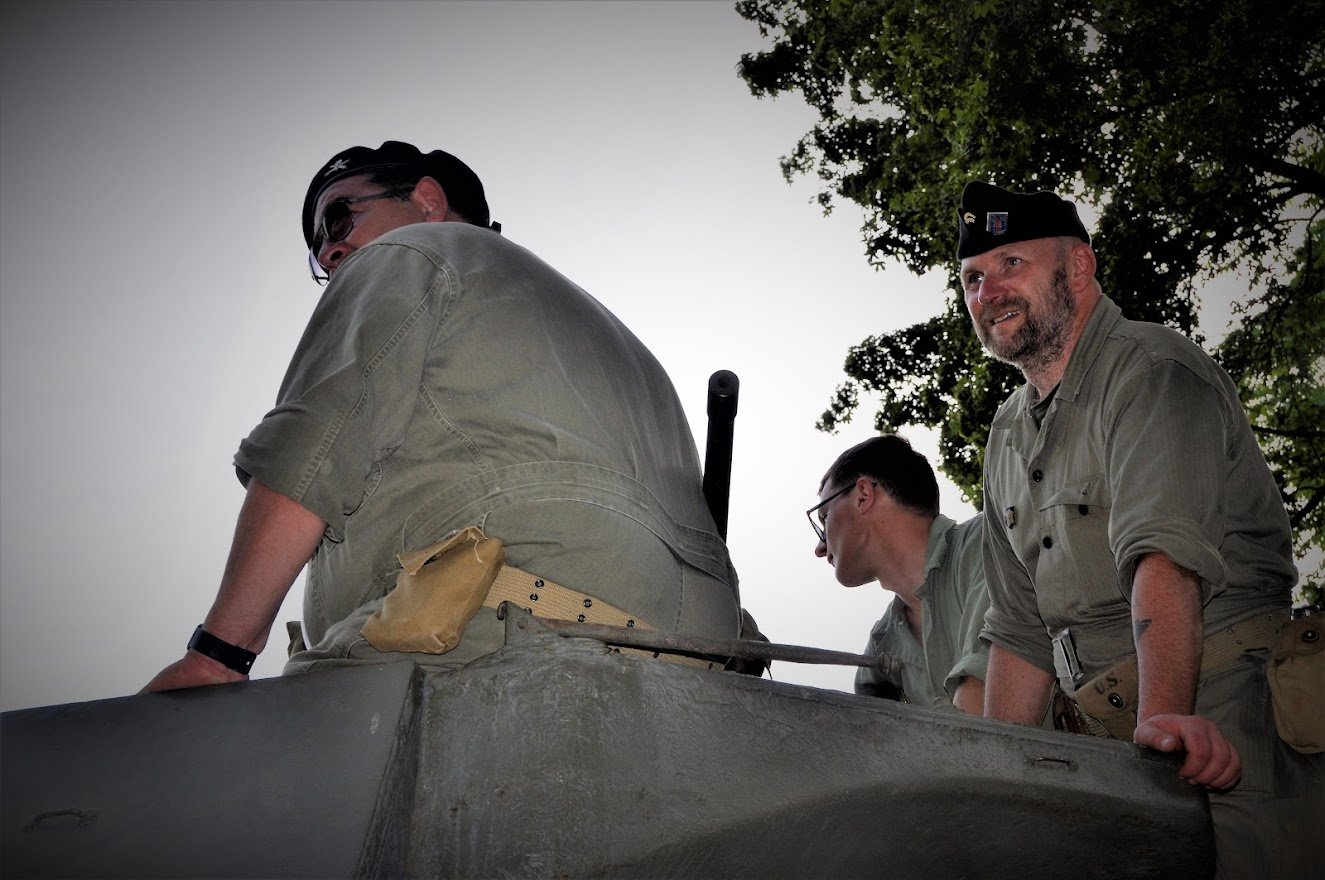
The Rise of the French Resistance
Chapter 30 - The Duty of Memory
General Charles de Gaulle fled to England after refusing to accept his government's armistice with Germany. The BBC broadcast his call to the French people to continue fighting the Germans. Known as the Appeal of 18 June, this use of the BBC was the first weapon given to France by the United Kingdom. It was also the first time de Gaulle used the term “resistance” in connection with the fight of the ordinary French people.
To all Frenchmen
France has lost a battle !
But France has not lost the war !
A makeshift government may have capitulated, giving way to panic, forgetting honour, delivering their country into bondage. Yet nothing is lost !
Nothing is lost, because this war is a world war. In the free universe, immense forces have not yet swung into operation.
Some day these forces will crush the enemy. On that day, France must be present at the victory.
She will then regain her liberty and her greatness. Such is my goal, my only goal !
That is why I urge all Frenchmen, wherever they may be, to unite with me in action, in sacrifice and in hope.
Our country is in mortal danger.
Let us all fight to save her.
Long live France !
General de Gaulle
Headquarters,
4, Carlton Gardens,
London, S.W.1.
Source:
Foundation and Institute Charles de GaulleTrip to France May 2017
Memories of past trips to France- in my Father's footsteps May 20, 2017
Letter from the Governor of Arkansas, Asa Hutchenson to the people of Crèvecœur-le-Grand for the aid they provided to Louis I Watts, native Arkansan
Newspaper Coverage in France
Events - 78th Anniversary D-Day
I just returned from a 5-week trip to France where I visited with old friends and met new friends Gerald and Carol Hovelacque. I also attended two 78th Anniversary WW2 D-Day events – one in Somme and another in Carentan (Normandy).
PART 1 Château de Tailly-l'Arbre-à-Mouches
The event in Somme to commemorate the landing of General Leclerc’s 2e DB Free French armored unit’s participation in the Allied invasion of northern France when they landed at Utah Beach on 1 August 1944 was held at Château de Tailly-l'Arbre-à-Mouches, the family home of General Leclerc located near Tailly, in the Somme department to the west of Amiens. Members of the family still live in the château.
A few of the re-enactors from the weekend. Note: I am the white hair in the back row — half hidden in the rose bush.
This annual event was organized by my good friend Sylvain Binet (first photo on the left, below) the president of Mémoire d’Alliés 1939-1945. Hundreds of re-enactors from across France assembled on the grounds adjacent to the chateau to realistically recreated with original equipment, uniforms, and vehicles a representation of the June 1944 military camp life. Great attention is given to authenticity creating a living history of WWII and sharing daily life. Uniforms and equipment are original or quality reproductions. And, yes I showered in a tent and I slept in a tent.
Despite the rain on Saturday crowds showed up to view Free French tanks and half-tracks and to remember the heroism and sacrifices of the brave men who liberated France in 1944.
That’s me dressed as a war correspondent with my driver.
Areas near the campsite provide secluded venues for recreations of inland skirmishes and tank attacks.
There was a steady stream of families and school children at this two-day event. Seventy-eight years later, a large number of the French population has vowed to never forget the lessons of World War II. The number of young people participating in and attending events such as this one gives hope that the value of freedom will be passed down to their children and their children’s children.
D-Day June 6, 1944 Still Celebrated in France 78 Years Later
If you think the French have forgotten the sacrifices Allied forces made to liberate their country, all you need to do is take a look at the volunteers of L’Association N’oublie Pas 44 (Never Forget 44). They give their time and their money to keep the memory alive.
The 78th anniversary of D-day, the day that Western Allied forces landed in Normandy, paving way for the liberation of France, will be celebrated this year. Annual celebrations have taken place since June 6, 1945.
That first commemoration took place on the beach near Arromanches only weeks after the signing of the armistice and Paris had been liberated less than a year earlier.
For a long time, commemorations of the Normandy beach landings were military celebrations, often attended by Allied veterans of that 1944 disembarkment. they served as a remembrance of the sacrifices of the Allied forces and those who made the ultimate sacrifice.
Since the 1980’s the event has focused on the sacrifices made to liberate France and on the horrors of war, allowing for a collective memory to stay fresh, so that past errors will never be repeated. Veteran associations and history buffs congregate every summer in Normandy to commemorate this turning point in the history of France. It’s common to come across a vintage Jeep driven by young people wearing 1940s American military garb heading to a site to participate in its commemoration. Battles are reenacted, without violence, to show the public how the armies were displaced on the ground. Aerial fights are also organized so that one can admire the maneuverability and the power of the planes that allowed airborne troops to land.
This year my trip to France- my 4th since 2017- will include participation in one of the historic reconstructions of military camps in Normandy, featuring Us Airborne troops with dioramas and displays of a medical evacuation station and demonstrations of the equipment of the American paratroopers. I will be there with my good friends of N’oublie Pas 44.
tom Rice 100 year old d-day veteran click link for his story
Some of the men and women of N’oublie Pas 44
1986 BBC Program featuring the "The Tailor" from The Duty of Memory
This BBC program from 1986 includes an segment with Bruno Radziminski one of the characters in my book. RAF Sgt John Miller was one of many Allied airmen assisted by the Kummel Line in Oise, France . https://www.youtube.com/watch?v=KyOZ_ekH9nc
Bruno with his Mama and his sister and niece. This is the shack where they lived after his tailor shop/home was destroyed by bombs.
Possibly a Trilogy!
Along with the files mentioned in my last post, Franck provided me with a mailing address for the family of Patrick Hovelacque. I wrote to them and am now in regular communication with the family. Patrick’s presence in the book has now grown to four chapters where he is the star and is mentioned in other chapters. He is such an interesting person I am considering giving him his own book. Since I have already started on a book about Bruno Radziminsky, a Polish tailor and Dunkerque POW, this will now be a trilogy!
Here is a portion of my email to Franck:
Franck, I can’t tell you how pleased I am to now be in regular communication with the Hovelacque family. I will be working with them for the next few weeks completing a few chapters about Patrick and his political leanings leading to his decision to join forces with de Gaulle in London. Having this information gives me a platform for personalizing the catalyst that brought the communist and the extreme right together in the Resistance. This is such an important piece of the story. When Gerald told me that Patrick was active in the Jeunesses Patriots while in school and actually was acquainted with the Taittingers I set out on a quest to learn more about the Young Patriots and the Taittingers . The result is I have lost 2 full days of writing time in exchange for 2 days of research. Not a day goes by that I do not send you good vibrations when I realize how many months (perhaps years) you have saved me by sharing your oh so valuable research. With that said, I have one more request—not likely the last request 😊. Pascal advises I should ask you for Hovelques files from the French Military Archives. Can you please share with me this file?
Franck’s reply :
Your book is a once-in-a-lifetime book. It is the story of your family. Delaying it is not important. Actually, I feel proud to be able to delay the writing of a book. Let me know if I can help again!
Amicalement, Franck
Patrick Hovelacque - Kummel Escape Line
Patrick Hovelacque
Sometimes the story has a mind of its own and can be quite a bully. Recently I was writing a chapter about the creation of the Kummel escape network in February 1944. I had only minimal information on the founder of the network, Patrick Hovelacque. Despite several attempts to get more information, I found only a few references to him on the internet. I wasn’t even sure of his nationality. I only knew he was operating out of London. Because of this, my intent was to give him a footnote and move on with the story. But a little voice in my head kept nagging me. Surely, he deserves more. I decided to give him a brief appearance in a meeting with Georges Jauneau, who became the local leader of Kummel. I Googled Hovelacque once more because I am a compulsive “Googler.” This time I found a little mention of the enrollment of foreign exchange students at the University of Georgia on page 15 of the student newspaper from September 23, 1938! How obscure. Was it possible that the student from Paris France mentioned in that article could be the same man I have been searching for? He would be about the right age.
https://gahistoricnewspapers.galileo.usg.edu/lccn/gua1179162/1938-09-23/ed-1/seq-15/
So, I called upon researcher extraordinaire Franck Signorile. He sent me the records gathered from the US National Archives (NARA) on Hovelacque and the Kummel line. Et voila! Just like that, I have enough information for three, maybe four chapters featuring this hero. After serving in the French Army and being de-activated after the Fall of France in June of 1940 this guy joined de Gaulle’s Free French in London. In February of 1944, he parachuted back into France to organize an Allied Escape line in the northern French region of Picardy. If you want to know more about this one-time Georgia Bulldog and genuine World War 2 hero, read The Duty of Memory.
Merci M. Macron!
On April 18 President Macron announced on US television that France will be reopened to American travelers in May or June 2021. On April 19 I was Googling flights to France and contacting my friends in France asking them to prepare a room for me. I have been waiting one year to interview 94-year-old Lucian Bertin. I first met Lucien in May 2017 and learned that he knew my father in 1944. We saw photos of my father, his crew-mates, and a teenaged Lucian Bertin. My father was an Allied Airman whose plane had been shot down over France during a bombing mission in preparation for D-Day. Lucien was a 17-year old Resistant.
During this 2017 visit, I decided to write a novel based on the true story we heard as we moved between the French villages where families had put their lives at risk to hide my father from the Nazis.
We were lucky enough to meet with M.Bertin again in September 2019 when we returned to France with the daughter of my father’s crew-mate, Joe Houlihan, and the son of crew-mate Billy Edge. Both of these visits were jam-packed with activities and schedules were tight, and frankly, it never occurred to me that this was likely the last living person who could tell me first-hand stories of those months from May 1944 until August 1944 while my father was being shuttled from hiding place to hiding place. I look back now and wonder how my brothers and I could have overlooked the obvious treasure we had stumbled upon.
Lucien Bertin in 2017 proudly wearing the medals he earned for his role in the resistance. From Left to Right:Cross of the resistance volunteer combatant, Combatant's Cross, French Liberation Medal, Medal of the Nation's Gratitude
It was while I was sitting at the dinner table of Daniel Radziminski as he told me the stories he heard from his father, Bruno, that I started to think of all the questions I had wished I had asked my father when he was still alive. Then the lightbulb went off. While in Daniel’s home, I wrote the first three chapters of The Duty of Memory and was already making a plan for a return to France in the Spring of 2020. We all know what happened to those plans.
Now with the world opening up once again, I can finally ask those questions of someone who was there. Next week I will be sitting in his home in France hearing his story first hand. What a gift this is.
1944 FROM LEFT TO RIGHT : LUCIEN BERTIN, JOSEPH HOULIHAN, YVONNE FOSSIER, LOUIS WATTS, SUZANNE LEQUIEN, WILLIAM EDGE.
75 YEARS LATER, In 2019 we recreated the 1944 photo in the same courtyard. FROM LEFT TO RIGHT : LUCIEN BERTIN, KATHLEEN ARGENTINA: DAUGHTER OF JOE HOULIHAN, PAULETTE (BEGUE): DAUGHTER OF YVONNE FOSSIER, MICHAEL WATTS & VICKI OLSEN: CHILDREN OF LOUIS I WATTS AND BOB EDGE:SON OF WILIAM EDGE
Lucien Bertin proudly wearing the medals he earned for his role in the resistance. From Left to Right :Cross of the resistance volunteer combatant, Combatant's Cross, French Liberation Medal, Medal of the Nation's Gratitude.
Don’t Underestimate the Men in Skirts
The Other Dunkirk
51st Highland Division Last Stand Battle of St Valery
THIS week marks the anniversary of the Dunkirk evacuations – hailed as
the miraculous rescue of troops during World War Two. If you saw Christopher Nolan’s 2017 movie Dunkirk you didn’t see the whole story. The Dunkirk evacuations, which began on 27 May, were spun into tales of an incredible victory; 338,000 Allied soldiers were snatched to safety. Meanwhile, a further 220,000 Allied troops were rescued by British ships from Cherbourg, Saint-Malo, Brest, and Saint-Nazaire, bringing the total of Allied troops evacuated to 558,000. Dunkirk was a huge achievement and it had to be portrayed as a victory and as a success to boost the morale of the British people and capture the nation’s imagination. That was the good news.
What politicians were not going to start telling was the bad news. While eight times more men had been saved than thought possible, what you didn’t see was the story of the thousands of French soldiers left standing on the beach to be captured by the German forces or the British 51st Highland Division ordered to join the battered French forces and stop the German’s advance when the operation ended on June 4.
Over the next week, the French and the Highlanders continued to fight against
impossible odds at the Battle of St Valery. In the end, around 10,000 men being captured by the Germans led by General Erwin Rommel.
Follow my links to get the entire story. They tell it much better than I can.
One of the French soldiers at the Battle of St Valery was Dr. Edmond Caillard. Dr. Caillard plays an important role in my book The Duty of Memory
“Les hommes en jupons de femmes.”
Le Massacre a Paradis
Le Devoir de Memoire, the duty to remember, a concept born after the Second World War, is a common notion in France, where the memory of the German Occupation and, more generally, World War II is still very much alive.
The concept mandates the moral obligation to remember a tragic historical event and its victims, in order to ensure that an event of this type does not happen again.
With the last remaining actors and eyewitnesses to these events now in their 80’s and 90’s it is now up to the efforts of associations and local authorities to erect commemorative monuments, organize pilgrimages for the recollection of the families of the victims and provide information in order to assure the cry of “never again!” is still loud and clear within the collective memory of the French population and the world.
This video demonstrates what Le Devoir de Memorie is about the video is in French and English. It captures the essence of the union of England and France to remember this historic event.
Here is a link to the Wikipedia article on the Massacre at Paradis
Today's thoughts- The Battle of France after Dunkerque
The Duty of Memory
May 10, 1940 – Jun 25, 1940
Today I am writing about the continuation of the Battle of France. Popular history leaves many to believe the battle was over at 03:40 on the night of 3/4 June 1940 when the last ship left Dunkirk.
But sixty remaining French divisions and two British divisions made a determined stand on the Somme and Aisne.
J'écris sur la bataille de France. L'histoire populaire suggère que la bataille était terminée dans la nuit du 3/4 juin 1940, avec le dernier navire à quitter Dunkerque.
Mais soixante divisions françaises restantes et deux divisions britanniques prirent une position résolue sur la Somme et l'Aisne.
HALF-WAY THERE? NOT REALLY!
We are all currently “sheltering in place” because of the Coronavirus. Yesterday I got sad news from France. One of the main contributors to my source material just lost his 94-year-old paternal grandmother to the virus. In reflecting on this, I realized that she was a contemporary of the characters in Duty of Memory. So few of that generation are left to tell the story. The realization hits me with an urgency to finish telling this story. So many times while writing a passage, I say out loud, “ I wish Daddy was here so he could answer my questions.” Since I began researching the novel almost three years ago, we have lost two of the eyewitnesses to his story that I met in 2017. Lost with them is the chance to hear the story from those who were actually there.
So many of the WW2 veterans, including my father, didn’t talk much about the war. As a result, there are many families who don’t know the personal stories.
The French experience during the war was unique. Because of the Armistice following the Battle of France it became a divided country. There was almost a civil war atmosphere with the division between the occupied zone of northern France and the Nazi collaborators of the Vichy Government to the south. In retrospect, it is easy to see the Vichy Government as the '“bad guys,” and perhaps they were.
But put yourself there, and ask yourself: what would you really do? Would you resist or collaborate?
Watch Louis Malle’s film Lacombe, Lucien (1974) and then ask yourself the question again.
A clock strikes somewhere.
He starts, rouses himself. “What! can it be that late? Impossible, it must be fast!” Drawing a breath, George Jauneau raises his head and looks out the window. Seeing the darkness gathering, he quickly clears his workstation and hurries away, locking the door of the laboratory behind him.
As he rushes from the Weeks factory building, he meets no one; all the doors are shut and the stairs are deserted. This is not an unusual situation for George as he leaves work. Ever since the Parlement français had bowed to pressure from the workers and enacted a law limiting the work week to 40 hours, he is often the last to leave the building. The 33-year-old activist smirks at the irony. He had campaigned hard, alongside his father, in the Radical Socialist Party movement to get this enacted; nonetheless he enjoys his work as a chemical engineer, and he has no wife to hurry home to. But tonight, he has a soupçon of escape from his familiar solitude—a business meeting—communist business.
He walks out into the streets just as shop windows are beginning to glow. Picking his way to the bistro, preoccupied with many thoughts, he stops and stands motionless for a few moments, without being aware of it. The people who pass along the sidewalk, moving vaguely under the trees, are only shadows with muffled voices, silhouetted in the pale glow of streetlamp globes.
When he reaches the corner at the juncture of the sidewalk that leads to the door of the bistro, he stops again, “Ah, I wish I knew,” he whispers pensively. “I do wish I knew what she thinks of me.” He stands for more than a minute and with studied deliberation he critically views the reflection of his sharp features and high cheekbones in a café window.
He is fond of making fun of his own face, particularly his conspicuously aquiline nose, though, in truth, he seems proud of it, especially when he receives one of the frequent comparisons to the British actor, Basil Rathbone. “A regular Roman nose,” he would say, “I’ve the countenance of an ancient Roman patrician of the decadent period.” His prominent Adam’s apple would bob below his sharp chin, and his lips, as thin as two threads, would curl into an infrequent, crooked smile; that smile that seldom reaches his small, quick eyes, shining like two bright points. There is something suspicious, and ironical in those eyes; something which gives him an ominous and portentous appearance.
He passes a hand over his cheek and rubs the network of fine wrinkles around his eyes. “They make me look older than I am. Do I look as if I am her father?” He shrugs, picks an imaginary hair off his lapel and resumes his journey to the bistro.
The hammering of his heart builds as he pushes open the door, and after an instant's hesitation, enters the smoke-filled room, thick with the smell of perfume and perspiration. As expected, he finds it crowded with noisy customers laughing boisterously.
He turns sideways to work his way across the bare floors of the long, narrow room. Pushing through the crush, bumping into knots of people clustered here and there as he goes. He brushes past a group of students, a couple of smartly dressed women sipping glasses of wine, and a pair of low-voiced lovers whose coffee cups remain untouched on an iron-legged table topped with bare marble, yellowed with age and use. A sense of unreality wells inside. Years ago, it had been his habit to escape into the anonymity of a crowd such as this—souls with no real home life—living in the bistros, rendezvous with their friends to gossip and drink infinite bottles of wine. One can find these people in every bistro and café in every city. But he no longer looks for that kind of retreat.
Above the sound of the crowd he hears the voice of his friend, Jean Crouet, call his name. “Georges.” He waves. “Over here.”
Above is the opening of a chapter I wrote yesterday about a real-life character, Georges Jauneau. He was a communist. I grew up in a time when Americans feared nothing more than communist. But Georges Jauneau was a hero of the French Resistance. In fact, a lot of heroes of the French Resistance were communist. I grew up in a time when Americans viewed French Resistants as heroes.
Duty of Memory is a book about the real people behind the French experience of WW2. I hope I can do it justice.
This week, I reached a word count of 51K. My goal is to have a first draft of around 100K, with the goal of editing it down to around 90K. So my first draft is 50% finished. But most of the hard work comes during the editing process. With the first draft, I can pretty much write with abandon—let my characters go where they want. But in the edits, I have to, as Stephen King says, “kill my darlings.” No matter how much I might love a sentence, a paragraph or even a character, if it doesn’t work for the story, it has to go. Je suis triste.
Possibly the Youngest French Resistant
In September 2019 my brother Michael and I made the trip to France again. this time we were joined by Kathleen Argenta, the daughter of Joe Houlihan and Bob Edge, the son of William Edge. Sharing this experience with the children of my father’s crew mates and fellow evadees added to the poignancy of the experience. In the picture to the right, we are standing in the same location as the photo my brother Michael is holding. Lucien Bertin, at the far left is the only living survivor of the original photo. What a thrill to have him pose with us. He was able to join us on this visit as well as our 2017 visit. He was only 17 in 1944. Joe Houlihan was 19.
Saint Just-en-Chaussée - June 1944 - At Paul Begue and Yvonne Fossier's home.
From left to right : Lucien Bertin, Joseph Houlihan, Yvonne Fossier, Louis Watts, Suzanne Lequien, William Edge.
The True story On 3rd July 1944, the Gestapo and about 300 SS soldiers surrounded the bottom of the Rue de Paris and the home of Yvonne Fossier where William Edge was still located. William Edge and Paul Bègue shut themselves up in a rabbit hutch for nearly two hours in order to escape arrest.
That's when their neighbor Suzanne Lequien came in. She had the audacity and bravery to extract William Edge from the trap by hiding him in the bottom of a baby pram, with Yvonne Fossier's daughter, Paulette, 18 months old, over him. Right under the noses of the Germans she then took him to a safe place at the house of Paul Bègue's sister, a little further down the same street.
Paulette showing the French Commemorative War Medal and the US Prsedent’s certificate of gratitude awarded to her father for his Aid to American Airmen. Her pride shows in her face.
Replica of June 1944 photo ... 75 years later ! From left to right : Lucien Bertin, Kathleen Argentina: daughter of Joe Houlihan, Paulette (Begue): Daughter of Yvonne Fossier, Michael Watts & Vicki Olsen: children of Louis I Watts and Bob Edge:son of Wiliam Edge
One of the most interesting stories surrounding this stop on our “in our fathers’ footsteps tour” is Paulette’s involuntary role in the resistance. "I obviously do not remember because I was only 18 months old. It is to my mother and her friends that all the credit must be given ... " Paulette timidly declared. In photo below Bob Edge holds a photo of Paulette in her baby carriage. Suzanne Lequien hid Bob’s father in the bottom of the baby carriage, covered him with baby blankets and sat Paulette on top in order to sneak him past the German’s. This was a very moving moment. Bob had no idea he would meet the baby who starred in the story his father had told of the event. I suspect there will be some who will think I made this one up when they read about it in the book. The truth is stranger than fiction.
The Tailor - Bruno Radziminski
L-R My brother Louis, Michel, Me my brother Michael,Daniel, My mother and kneeling is my father
In the fall of 1958 our family sat around the dinner table discussing what overseas assignment my father should ask for. It was time for his foreign rotation and he could put in a request for a station. My mother and I voted for Hawaii. My brothers wanted Alaska. Remember that in 1958 neither Alaska or Hawaii was a state, so these were overseas assignments. I don’t know what Daddy actually put in for, but I suspect it was neither of the two. He got orders to report to Wiesbaden, Germany in January 1959.
While there, we went to France to visit my father’s wartime friend, Bruno Radziminski. I had some vague recollections of stories my father told us about the time he spent with the French Underground during the Big War. It all sounded romantic and somewhat sinister...but it was something that had taken place in the “olden days” some fifteen years earlier. I certainly had no interest in listening to a couple of old guys reminisce after drinking a few glasses of wine. I also recalled hearing my father’s spirited singing of Le Marseilles after similar indulgence in wine at the office parties he hosted at our house in Idaho. Fortunately for me, Bruno and his wife, Marguerite had two sons about my age. Michel was 13, Daniel was 11 and I was 10. They spoke no English and I spoke no French. Daddy was too busy drinking wine and singing with Bruno to act as interpreter, but he did give me and my brothers a French/English dictionary and sent us out to play. No worries. With that dictionary and a lot of sign language we had a great time…even went to the movies. And I developed my first serious crush. Ten year old me wanted to marry 13 year old Michel. Notice how I am snuggled up to him in the photo.
Now that I am old and my parents are no longer around to tell the stories I so much would like to hear, I wish I had paid more attention to Bruno and Daddy, instead of mooning over Michel. But all is not lost. In 2017 my family reunited with the Radziminski family and I spent a week at the home of Daniel and his wife Gwenael hearing stories about Bruno. I use Bruno as the narrator of the book, so I returned in the fall of 2019 for a much longer stay to gather even more stories from Daniel. In the tradition of our fathers, we drank a few dozen bottles of wine as well. The bonus is that Daniel is a gourmet cook and a wine connoisseur. His home is on the Atlantic coast of the Vendée region and we had fresh seafood everyday. I even gave in and ate mussels and snails…as well as a few things he refused to identify as anything other than “meat.”
A wonderful French organization:Association of Sauveteurs of Aviatorians Alliés - Association of Allied Aviator Rescuers, is working to preserve that history before it is all lost. We will never be able to capture those details the other generation could have given us, but at least the story is still there for us. It is with the help of their President Dominique Lecomte and their researcher Franck Signorile that I am able to gather the information to write Devoir de Memorie.
The Road to the First Page
The Duty of Memory
It took 5 years to write Sparrow. I hope to finish Duty in less than a year. I returned from my recent 90 days in Europe with 50 pages of hand written notes and all kinds of thoughts bouncing around my head…and a title for my next novel…Le Devoir de Mémoire—the Duty of Memory. I also had a few day-dreams about the cover. Hint: it will include the handsome young man in the photo on the right.
This project started in my mind more than 2 years ago when our family was contacted, via social media, by a young man in France, Pascal Pollet. He was gathering information on his grandfather. He told us his mother wanted to know more about her father. He died when she was only 6, so she never got to know him. What is the connection? Pascal’s grandfather, Juste Desesquelles was a member of the French Resistance and he was a member of the network the helped my father evade capture by the Nazis after his plane was shot down over France on May 10, 1944.
It all started with this email to my sister-in-law:
Hello Mrs Watts,
My name is Franck. I live in Paris, France. I am currently researching the WW2 story of two American airmen who were shot down over France in 1944 : Louis Watts and Joseph Houlihan. Louis Watts enlisted in the US Army Air Forces and joined the 394th bomb group on the European theater. He has lived in Little Rock, Arkansas, and passed away in 1984.
If that person is not a member of your family, please ignore this message with my apologies.
If he is, you might wonder why I am trying to get in touch with his family. One of my friend's grandfather was a member of the French resistance during ww2. We have recently discovered that Louis Watts and Joseph Houlihan had been helped by a number of people in France and had managed to avoid capture by the Germans thanks to these people. Pascal's grandfather was one of these men.
For several months, Pascal and I have been researching the evasion story of these two airmen and we are getting to a point where contacting families and sharing what we have found makes sense, if this is of any interest to the family.
As a long-time LinkedIn member, I know that this type of request is definitely not proper use of a professional social network. But I sincerely hope you will find interest in our research project.
Best regards,
Franck Signorile
After a few emails back and forth exchanging information on WWII events, we found that Pascal had also managed to find the families of two of my father’s crew-mates who were also helped by his grandfather. Pascal was aided in his search for information by a wonderful organization in France, ASAA Association des Sauveteurs d'Aviateurs Alliés. Their mission is to collect the history of the Allied airmen shot down in occupied France and of those people of the region who came to aid those aviators. Further, they seek to establish or reestablish links between the families of both the airmen and the rescuers.
Being old and retired with nothing else to do, my brothers, their wives and I decided a trip to France to meet these people seemed like an excellent plan. So, in May of 2017 we packed our bags and took off to France for an experience of a lifetime.
The B-26 “Marauder” # 42-96058 belonged to the 394th Bomb Group, 585th Bomb Squadron of the 9th Air Force, also called the "Bridge Busters" based in Boreham, Essex, England. The 394th Bomb Group participated in the preparation of the future Landings in Normandy by striking bridges, marshalling yards, airfields and V-weapons sites.
Sgt. William L. EDGE Navigator/Bombardier Evaded then POW Tuscaloosa, Alabama
S/Sgt. Louis I. WATTS Radio-operator Evaded Little Rock, Arkansas
Pvt. Joseph J. HOULIHAN Tail gunner Evaded Philadelphia, Pennsylvania
Juste Desesquelles
The crew of the B-26 #42-96058 ( my Father is lower Left in this photo)
Capt. James A. JOY Pilot POW Edinburg, Texas
2nd Lt. John O. JOHNSON Copilot POW Oklahoma
S/Sgt. Harold J. MAYNARD Enginner POW Racine, Wisconsin





